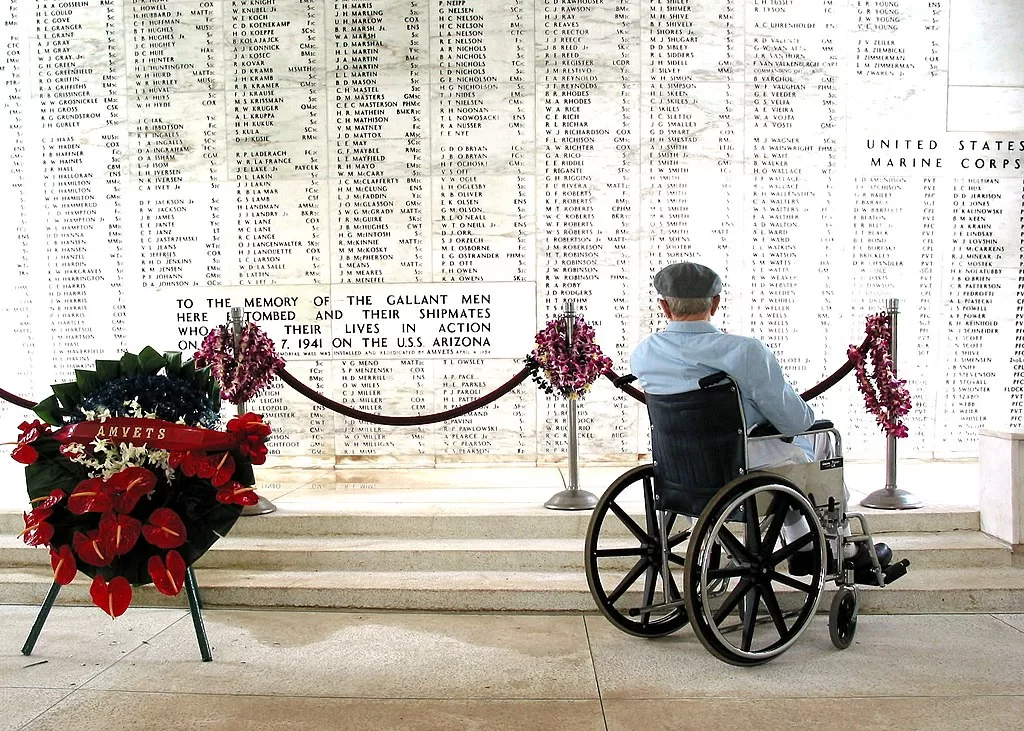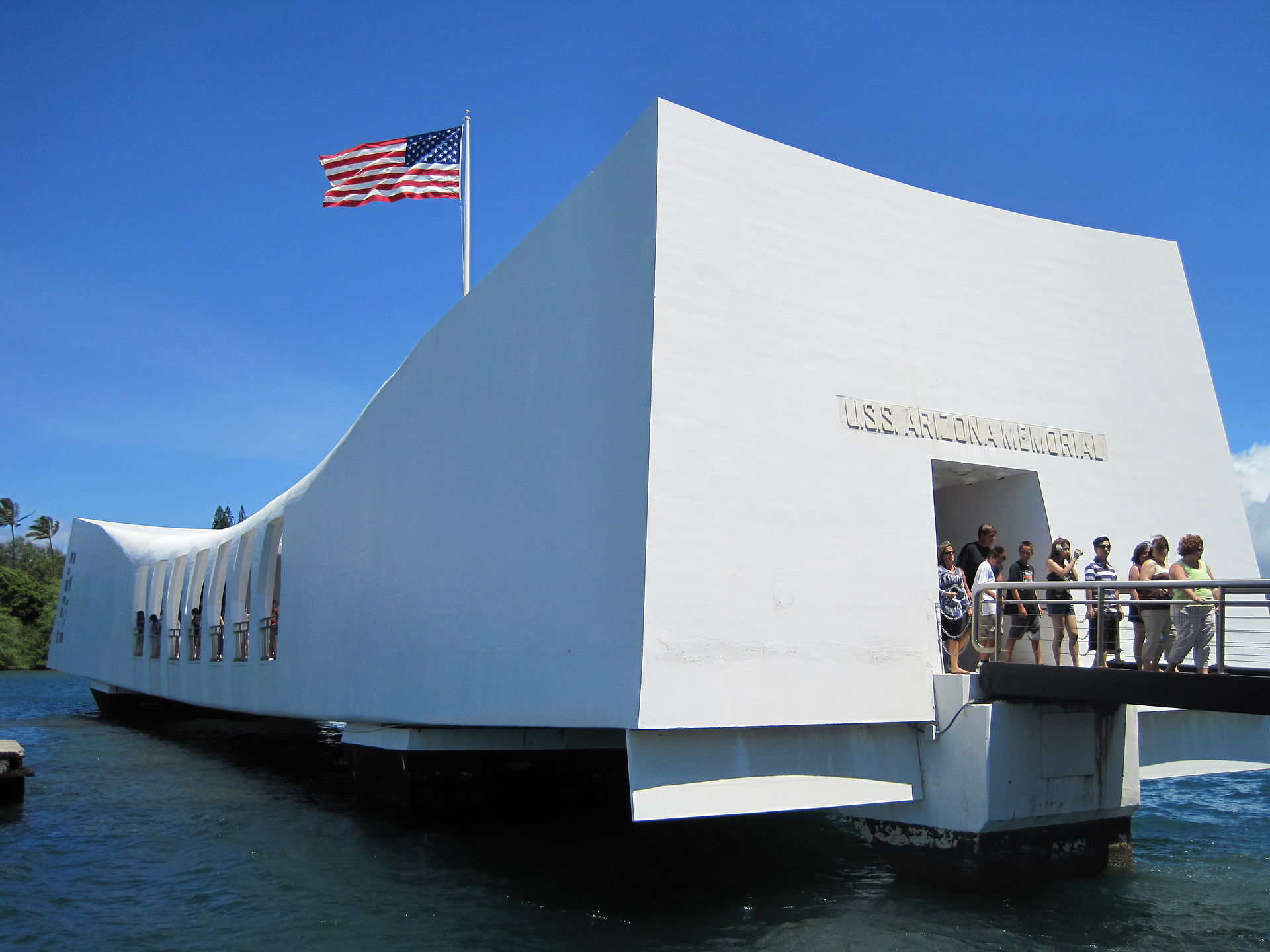Was Imperial Japan’s Attack on Pearl Harbor Part of a Jewish Conspiracy?
THE PEARL HARBOR NO ONE KNOWS
Introduction
It is common knowledge amongst National Socialist scholars that the Zio-American president named Franklin Delano Roosevelt FDR partnered with International Jewry to coerce Japan into attacking the Zio-American naval base at Pearl Harbor on the Hawaiian island of Oahu. Roosevelt connived to get Japan to attack the Zio-American empire’s fleet of naval ships harbored at Pearl Harbor in order to foment domestic popular support for a looming war between not only the Zio-American empire and imperial Japan, but also between the Zio-American empire and the Third Reich.
Exactly how provoking a war between the Zio-American empire and Imperial Japan would segue into a Zio-American empire conflict against the Third Reich is still less well known. After repeated provocations against the Third Reich by Britain and other Jewish-controlled European nations failed to produce the desired effect, Hitler began to understand the plans that were afoot. In retrospect, it appears that a war between the Zio-American empire and imperial Japan was planned by the Zio-American empire’s (((true rulers))) well before Hitler ever rose to prominence.
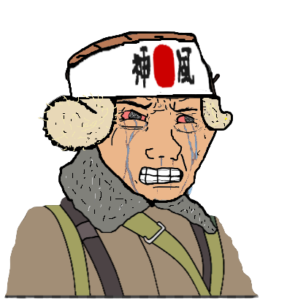
Many details of the Japanese attack on Pearl Harbor have also been hidden since this notable event, and sometimes deliberately so. The (((official))) historical recounting of Japan’s attack on Pearl Harbor is not so much false as it is incomplete. Much of my understanding about the unofficial history of Japan’s attack on Pearl Harbor was gleaned during my service in the US Navy, which included spending some years stationed aboard a guided missile destroyer homeported in Pearl Harbor.
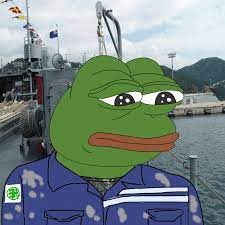
“THE DAY THAT WILL LIVE IN INFAMY”
Today is December 7th 2022. At 7:55am Honolulu Time it commenced.
Pearl Harbor Remembrance Day. “The Day That Will Live In Infamy!” The day that Franklin Delino Roosevelt sold the country (USA) out to please The Jews. A day to remember for all those who died, from of all nations, as a result of Roosevelt’s betrayal many people. December 7 is a day to commemorate the great civilizations that were ultimately destroyed as a result of World War II, and a day to reflect on temporary the loss of a new Golden Age that was beginning to dawn with the arrival of the Third Reich. All of Roosevelt’s treachery was done just to please the enemies of all mankind.
The Japanese attack on Pearl Harbor represents an event where great nations were manipulated into doing the evil work of a race of Devils who only pretend to be men, all so that that race of Devils can wax worse and worse.
But today is something else, today is a time to think on all of the individual lives that were destroyed by this betrayal of all human races into the hands of The Devils. How many Lights were snuffed out along with the loss of all that they would have brought to the world in the end. This treachery happened all because of the lust for self-importance on the part of the race of Devils. How many families were destroyed? How many fathers, brothers, sons, lovers, and friends were killed because of the treachery behind the Japanese attack on Pearl Harbor?
Part 1. – Why the Zio-American-Amerian Empire and Imperial Japan originally came into conflict
Elements within the Zio-American Empire’s ruling class intended to pursue a world-ruling American empire, even before quasi-independence was gained from the British Crown. I say “quasi independence” from the British Crown in this case because the new American Empire was intended to be a Freemasonic Republic from its incept. The nascent Zio-American Empire would fully merge with Zionism when Jews began to emigrate to North America in the late 19th Century. As soon as the Zio-American Empire had expanded to the West Coast of North America, the empire’s ruling elite cast covetous eyes across the Pacific all the way to East Asia, especially to China, but also to Japan.

Part Two – The Conflict Begins
There were two humiliations foisted upon Japan by the Zio-American Empire which helped bring about the end of Japan’s Shogunate period and ushered in the Meiji Restoration period which begat the Empire of Imperial Japan.
The first Japanese humiliation at the hands of the Zio-American Empire consisted of a fleet of ships under the command of Admiral Perry arriving in Japan with intentions to forcefully open the Japanese economy to foreign plunder. Before Admiral Perry arrived, Japan was still a backwards, isolated, and closed nation; admiral Perry’s mission is now the stuff of standard historical records; however, the official version of history only tells part of the story. Official versions of Admiral Perry’s trip to Japan never discuss the Zio-American Empire’s motivations for sending their ships to Japan in the first place. It turns out that the Zio-American empire sent Admiral Perry over to the distant Japanese archipelago because the Zio-American brass wanted to transform Japan into a Zio-American colony. At the time of Admiral Perry’s visit, Japan simply lacked the means to oppose the intended Zio-American takeover of their islands.
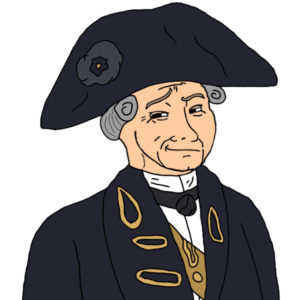
Image courtesy of wojakparadise.net
Admiral Perry’s expedition was part of a much large foreign push to open Japan’s internal waterways to foreign shipping, and this campaign was marked by several naval battles between French, British and Zio-American ships against Japanese forces. Access to Japan’s inland waterways was coveted because passage through the large Japanese archipelago was much faster than a circumambulation around the entire island chain within international waters. The most crucial time-saving shipping passage through the Japanese archipelago was the Shimonoseki Strait, also known as the Kanmon Strait. This series of battles that were fought for foreign control of Japan’s inside passages are now called the Shimanoseki Campaign.

Map with a red-highlighted Shimonoseki area featured courtesy of simple.wikipedia.org
The Zio-American Empire’s plans to make a colony out of Japan were rudely interrupted by the outset of the 2nd American Revolution, and an incident spurred on by the Second American Revolution set the stage for a second Japanese humiliation at the hands of the Zio-American Empire. This second humiliation at the hands of the Zio-American empire occurred when the Confederate naval cruiser named the CSS Shenandoah was wreaking havoc with US shipping in the waters of the Western Pacific. At this time, the CSS Shenandoah was operating in the Sea of Japan’s international waters under orders to disrupt shipping to the West Coast of North America.
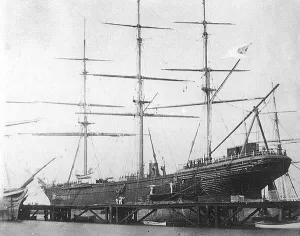
In response to the CSS Shenandoah’s shenanigans, the Zio-American Empire dispatched their own naval cruiser to deal with this pesky Confederate commerce raider, and this vessel was the USS Wyoming that was captained by David McDougal. The myriad water passages that wend through the Japanese islands are typically narrow, so the Shenandoah surely would have escaped if any Zio-American naval vessels had tried to sail around Japan’s main islands; therefore, the Zio-American navy demanded that Japan allow their ship passage through Japan’s inland passages so they could attack the Confederate cruiser. In response, the Japanese refused permission because Japan had made a neutrality asseveration during this conflict.
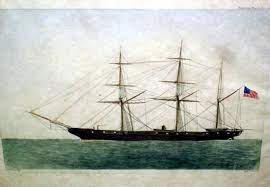
With an understanding that the Japanese could only oppose their ship’s passage with a few archaic shoreside artillery batteries, the Zio-American naval cruiser simply chose to traverse through Japan’s inside waterways anyway. In the resulting engagements, the USS Wyoming suffered no damage or casualties while a number of Japanese men were killed and wounded by shipside maritime artillery fusillades.
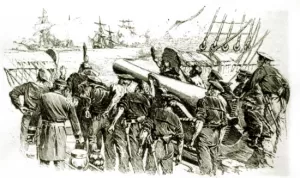
In this incident, the Japanese were unable to stop the Zio-American warship from sailing through their territorial waters, so they did the only thing they could do under the circumstances and warned the Shenandoah that a Zio-American naval vessel was coming, then apologized to the Confederate ships for being unable to prevent this violation of neutrality. Due to the Japanese warning, the Shenandoah escaped and continued to run amok until the end of the war.

Part Three – The Birth of Imperial Japan
The Japanese were now faced with a clear choice after the Shimonoseki Campaign: modernize and establish a powerful military, a strong navy, a great mercantile fleet, and a competitive industrial establishment, or become a colony of the Zio-American Empire. They chose the former.
The problem for the Japanese was that with the exception of coal they simply lacked the natural resources needed to execute their plans. At this same time, the Japanese agriculture complex was also unable to procure enough food to feed Japan’s rapidly increasing population, so Japan need to look outside of Japan to acquire the resources they needed. Japan’s quest for resources outside of their rocky island chain immediately placed them in conflict with Zio-American commercial interests which were trying to gain control of the natural resources and commercial markets of East Asia, especially China.

Image courtesy of knowyourmeme.com
Part Four – The Greater East Asian Co-Prosperity Sphere & The Tripartite Agreement
The essential purpose of the Japanese expansion from their island home was expressed in the slogan “Asia for the Asians.” Under Japanese leadership, the nations of East Asia united in a confederation of their own to insure mutual independence, prosperity, and security by ending “Western” Colonialism in the region and by ensuring that it was never be reinstituted. Imperial Japan’s East Asian Confederacy was not reality anti-western, but rather anti-colonialist. Japan’s anti-colonialism initiatives stood against direct colonization from Europe, or economic colonization from the Zio-American Empire. Under Japan’s new East Asian confederacy, East Asian political, economic, and cultural, and racial independence would be maintained, while fair trade between equals would be encouraged.
By the 1930s, the Japanese had already rid themselves of parasitic Jewish international banksters, and they planned on keeping their new confederacy free of Jewish banksters. It is worth noting that Japan completely paid off a huge debt to the Rothschild banking dynasty at the conclusion one the Russian Japanese War, and to this day, Imperial Japan is still the only nation or empire to have ever repaid a debt to the Rothschilds. ( Nobody escapes the Spanish Incision, and nobody is ever supposed to get out of debut to the Rothschilds, so when the Japanese Empire did this, the Japanese people were forever marked for genocide by international Jewry.)
Japan’s planned East Asian confederacy was essentially planning to do what Hitler had done in Germany and Mussolini was trying to do in Italy. In the years proceeding World War II, Germany, Italy, and Japan had all executed dedicated and sometimes successful plans to kick the Rothschilds out of their respective territories. Before World War II began in earnest, Hitler, Mussolini, and Tojo all knew their nations were marked for destruction by the Rothschilds as a result of their policies. Given Japan’s expansion outside of their island chain, and their uncooperative dealings with the Rothschilds, conflict with nations that were still under Rothschilds domination was certain in the 1930s.
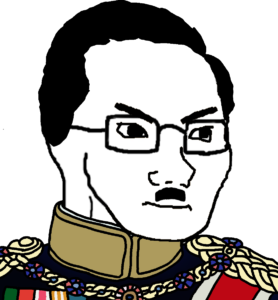
The idea of a Tripartite Agreement between Germany, Italy, and Japan was conceived in the 1930s because the leaders of each respective nation all knew that a storm that was gathering on the horizon. This new alliance of free nations operated kind of like the Three Musketeers did in Alexander Dumas’s eponymous novel, essentially it was “All for one and one for all.” This new anti-Jewish-bankster alliance seemed quite solid; however, such hopes were forlorn because it turned out that these three nations were completely unable to preserve world peace by trying to make themselves collectively too powerful to be toppled by violence. Toppling the free-nations alliance was no easy feat, yet the Rothschilds & Co. were perfectly happy to sacrifice 100 million+ lives to accomplish their goal of crushing resistance to their influences.
A brief mention must be made here of Subra Chandra Bose who was the true father of Indian Independence. During the 1930s, Mr. Bose was on board with the Axis Powers and he started bringing India into World War II as part of Japan’s Greater East Asian Co-Prosperity Sphere. The Indian National Army and a nascent Indian Air Force fought alongside Japan as well as Siam/Thailand. Then as well, the Indians created SS Tiger Panzergrenader Brigade of Waffen SS which Bose was also instrumental in creating. Himmler had German SS officers trained select Indians to be officers in this brigade. In marked contrast, the British never permitted Indians to become officers in their British Army of India because Indians were regarded as inferior men who were also a bit too politically unreliable.

Part Five – The American Oil Embargo and the Prelude to Carnage
Now we arrive at the juncture where the Zio-American Empire’s central control center in Washington D.C truly showed their stripes as being nothing more than agents of International Jewish Bankers (Rothschilds). The Zio-American Empire showed their Hebrew-serving stripes when they forced Japan into going to war in a classic case of conquer or perish for Japan.
With the exception of coal, Japan was bereft of natural resources and they could not even produce enough food to feed their growing population. With the exception of oil, Japan got the strategic minerals they needed from Manchukio (Manchuria). Under their Emperor Po, the Manchus formed part of Japan’s Greater East Asian Co-Prosperity Sphere. Although they are ethnically related, the Manchus are not Chinese and they have traditionally resented being ruled by China. In essence, Manchukio, as Japan called Manchuria, exchanged strategic minerals and agricultural products for Japanese protection from China, whether this threat from China was Nationalist or Communist in nature, but Japan also promised Manchuria protection from the Soviet Union.
Image courtesy of wojakparadise.net
A big deal is sometimes made of FDR’s Executive Order barring the export of American scrap metal to Japan, but in reality, even though America’s trade in scrap metal with Japan had been fairly significant, Japan was still able to weather this scrap-metal-withholding provocation by simply increasing their imports of iron ore from Manchuria. Like all modern industrial societies, petroleum was the very life blood of Imperial Japan, and Japan absolutely had to have a steady supply of petroleum.
The significance of petroleum for Japan was not just limited to its military applications either, in the 1930s, Japan needed petroleum supplies to import and distribute food. During the 1930s, if Japan lost access to petroleum supplies, then their population was doomed to starve, and starvation did arrive in Japan during the later parts of World War II. Japan needed access to petroleum not only to keep its population fed, but the Japanese also needed access to petroleum in order to maintain their status as a major world power, and Japan absolutely had to maintain their status as a great military power if they wished to escape being gobbled up by the Zio-American Empire.

One of the major reasons for the original creation of the Imperial Japanese Navy was to protect Japanese trade which was as the lifeblood of the nation. Before World War II began, Japan had the second largest navy in the world that floated slightly more carrier aircraft than the Zio-American Empire’s Navy, as well as more submarines that were also technologically superior to that of any other nation. (Italy actually started World War II with the world’s largest fleet of submarines, though they were of inferior design.) Such a truly world class outfit as the Imperial Japanese Navy required a prodigious amount of petroleum-based fuel to accomplish its mission, even in peacetime.
Historical trivia: immediately after the Meiji Restoration, the Imperial Japanese Navy had to be established very rapidly in order to protect Japan from more Zio-American economic and military aggression. In the Meiji period, Japan needed warships built quickly in order to gain the time they would need to create the navy they needed; therefore, a good number of warships were contracted for construction for from various European shipyards with help from the Southern Confederacy! When the Second American Revolution ended, these shipyards were stuck with ships that were contracted to Japan and even paid for, but the Japanese were now unable to come and claim their property.
Before the Zio-American-imposed petroleum embargo, Japan received about 15% of their needed oil from the United States and the rest came from the Dutch East Indies (Indonesia).
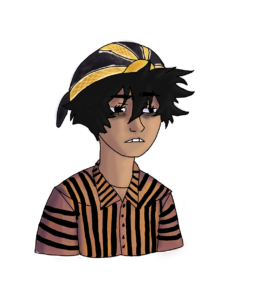
The Zio-American petroleum embargo initially just affected North American oil imports to Japan, so the Japanese simply countered this problem by increasing their purchases from the Dutch East Indies. I have been unable to ascertain just how they did it, but somehow, the Zio-American Empire was able to put so much pressure on the government of the Netherlands that they eventually ended all petroleum imports of oil from their Dutch East Indies holding to Japan.
The Dutch were not stupid enough to halt petroleum imports to Japan on their own because The Netherlands suffered irreparable economic damage due to their petroleum embargo against Japan. The Dutch also knew that the oncoming petroleum embargo would force the Japanese to attack and cease control of their holding in the East Indies. The Dutch additionally knew that their limited presence in Indonesia was no match for Japanese military aggression. As foreseen, the Dutch petroleum embargo against Japan forced the Japanese to take military action in Indonesia because at that time Japan only had a ten-week supply of fuel to conduct the type of major military operation they would need to keep their country going.

Part Six – How a Certain Drunken Sot Got the British Empire Involved in the World War II’s Pacific Theater of War
Initially Japan had absolutely no intention of attacking British colonies in East Asia and the Pacific, that is until Churchill decided to build up military forces in Singapore and Malaysia with the intention closing off the supply of oil to Japan after the Japanese began to occupied the Dutch East Indies. Winston Churchill ordered British forces to intercept Japanese military envoys to Indonesia even though Britain was not at war with Japan at this point.
Churchill ignored the warnings of his most senior military advisors when they forecasted that British military assets in the Far East would become dangerously overextend if they tried to halt Japanese military incursions into Indonesia. Churchill’s most senior military men warned that sending any British reinforcements to East Asia would drain critical strength from the Atlantic, Mediterranean, and North Africa regions where Britain was already barely able to maintain their ground against the Germans and Italians. The bottom line was that around the time that the Japanese made their move to secure petroleum reserves in Indonesia, Britain was unable to send enough military resources to stop the Japanese. At that time, it was clearly better to not provoke Japan needlessly when there was no hope of success.
Regardless the idiotic underpinnings of Britain’s military adventures in Indonesia, Churchill moved ahead with his moronic plant to halt Japenese advances into Indonesia, and Churchill’s jowly drunken blunder very nearly cost the British all of World War II. Japan inflicted nearly a quarter of a million casualties on the British in Indonesian, with the largest number of deaths going to Australia.
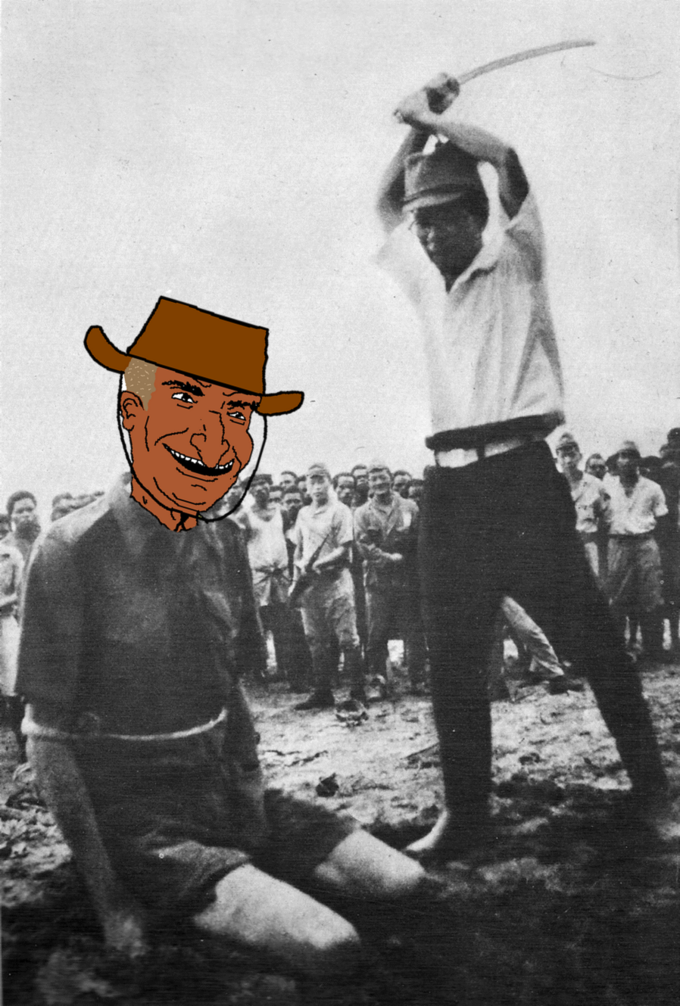
Image courtesy of knowyourmeme.com

Image courtesy of quotesgram.com
Churchill’s blunder in Indonesia also cost the British empire a good number of precious warships that they desperately needed to counter the Germans and Italians. Specifically, the British lost the battleship Prince of Wales, the battlecruiser Repulse, the light carrier Hermes, and the heavy cruisers Devonshire, Shropshire, and Exeter.
By trying to do too much with too little, Churchill barely escaped being defeated everywhere. The situation in the European theater was only salvaged by redeploying the surviving major ships that were sent out to attack the Japanese back to European waters just in time to avert disaster.
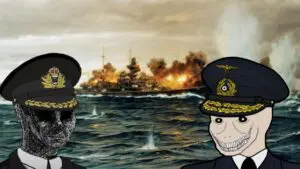
Image courtesy of wojakparadise.net
Part Seven – Why Did Japan Specifically Attack Pearl Harbor?
What I am mainly concerning myself with here is what the Japanese call the Battle of Pearl Harbor. I am purposely avoiding a discussion of Japan’s long-range plans for the Hawaiian Islands during the World War II era. During the 1930s, Japan was interested in incorporating the Hawaiian archipelago into a “forward defense line” for Japan which would stretch from American Samoa, through Hawaii, to Dutch Harbor in Alaska’s Aleutian Islands.
Creating a line of Japanese defense that would have stretched across the Pacific was absolutely as far as Japan wanted, or was able to expand to the east. The Battle of Pearl Harbor was fought to insure that the US’s Pacific Fleet would be rendered unable to interfere with Japan’s occupation of the Dutch East Indies, and in this regard, Japan’s attack on Pearl Harbor was totally successful.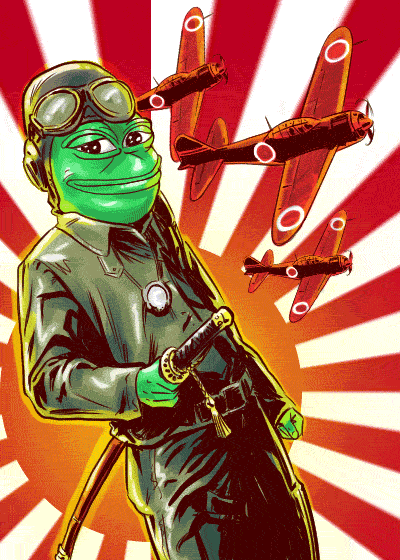
GIF coutesy of knowyourmeme.com
Even though the Japanese were unable to eliminate any American aircraft carriers in their attack upon Pearl Harbor, the Japanese were still able to preempt any Zio-American intrusions into Indonesia. Strategically speaking, the Japanese occupation of French Indochina (Cambodia, Laos, and Vietnam) along with their occupation of the American Territory of the Philippines, plus the British colonies of Malaysia and Singapore were intended to guard the flanks of Japan’s Dutch East Indies occupation. It is worth noting that Japan intended to give Indonesia their independence as part of the Greater East Asian Co-Prosperity Sphere. Many of the key leaders of the post-World War II Indonesian independence movement were originally trained by Japanese military advisors.
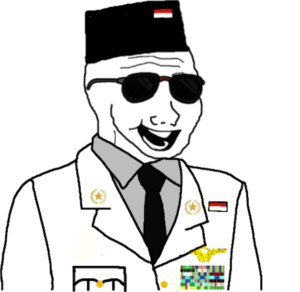
A brief digression here: the French conquest of Indochina in the mid-1800’s was truly a savage “might makes right” affair. French colonial rule in Indochina was a very oppressive and exploitative affair which left the natives extremely impoverished. As a consequence of this oppression, many young Vietnamese men enlisted in the French Army, but they did not enlist in the French army out of any sense of love for France.

Image courtesy of 9gag.com
Most Vietnamese men that enlisted in the French military during Vietnam’s colonial years enlisted to escape the terrible conditions at home; this situation mirrors Irish motivations for serving in the old British Empire. During the 1940 German invasion of France, the French Army sent large numbers of colonial troops —including men from Viet Nam — into battle against the Germans. As a consequence, many Indochinese defected to the Regular German Army. Colonial defectors from the French military would later raise a Security Battalion working with the Third Reich that consisting of French colonial Buddhists from Southeast Asia. The Third Reich’s Buddhist volunteers rendered very effective counter insurgency against the French (Communist) Resistance.

Part Eight -The Japanese Table of Organization & Equipment (TO&E)
A country’s TO&E list reflects their ACTUAL military assets that indicates what they really capable of doing. As it is intended, a nation’s TO&E is meant to be an internal document that is not marked for general distribution. A study of Japan’s World War II era TO&E (which Washington was perfectly aware of) proves that the Japanese never had the capability to actually invade of the North American mainland. An honest review of Japan’s World War II era TO&E proves that their war against the United States really never anything but defensive in nature, as well as being anti-colonialist in regards to East Asia.
At the onset of World War II, the Japanese were forced to try and accomplish a great deal of very big objectives very quickly and with limited resources. The Japanese would have captured all of their objectives if it were not for bad luck costing them the Battle of Midway.

It was only fickle chance that kept the American carriers from being the ones annihilated at the Battle of Midway. Except for the Imperial Japanese Navy, the Japanese were trying to fight the Zio-American Empire on a shoestring budget of resources. During World War II, most of Japan’s military resources were tied down in continental Asia, so Imperial Japan was forced to conduct large-scale ground wars in Southeast Asia and Northeast Asia while also trying to fight the Zio-American empire in a discursive theater of war that was scattered across specs of land poking out of the truly vast Pacific Ocean. During World War II, Japan had to somehow manage the threat posed by Australia from the south and Zio-American Empire to the East while also maintaining a large force in Manchuria to resist an impending attack from the USSR.
Imperial Japan’s six heavy aircraft carriers that took part in the Pearl Harbor attack were:
Akagi (Red Tree)
Kaga (A province of Japan)
Hiryu (Flying Dragon)
Soryu (Blue-Green Dragon)
Shokaku (King & Castle)
Zuikaku (Dragon & Castle)
Among their escorts would be Japans four fast battleships: Haruna, Hiei, Kirishima, and Kongo (All named after provinces.)
Part Nine – A Plan Compromised, a Nation Betrayed, and an Honorable Men Scapegoated
Image courtesy of wojakparadise.net
It has been publicly established for approximately for 50 years now that the Zio-American Empire’s central control center in Washington D.C provoked Japan into fighting in World War II. Today, any honest scholar of history will admit that the Zio-American Empire sacrificed American personal at Pearl Harbor in 1941 by not warning the local American navy admirals and army generals about the impending Japanese attack, to say nothing of the general American population in Hawaii and elsewhere. The Zio-American Empire’s top brass wanted Japan to attack Pearl Harbor so that the general American populace would become so enraged that that they would clamor for a total war against all of the Axis Powers, including Japan, in this regard, Japan’s attack on Pearl Harbor could be called a PsyOp writ large.
Over the years, many worthwhile books have been written on the subject of Japan’s attack on Pearl Harbor; therefore, I will only focus on a couple of aspects of Japan’s attack on Pearl Harbor that are still not general public knowledge. There was a book published some years ago by a former member of Australian Military Intelligence titled Betrayal at Pearl Harbor. In this book, the Australian author related how Australian intelligence services found out about the Japan’s impending attack on Pearl Harbor well before Japan’s strike force even left Japanese waters. The Australian intelligence service passed their report about Japan’s oncoming attack on Pearl Harbor up the line to Churchill himself with full expectations that Churchill would pass this pertinent information on to Washington. Instead, this Australian intelligence officer found himself officially forbidden to discussing this subject (aka he had a gag order imposed on him).

GIF courtesy of knowyourmeme.com
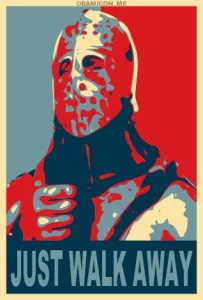
Before Japan’s attack on Pearl Harbor, the American Diplomatic Corps maintained a field office in Japan that was closely associated with the Office of the Naval Attache, and this Zio-American field office was tasked with observing the comings and goings of major units in the Imperial Japanese Navy and they were tasked to keep Washington informed about any Japanese military developments. At a certain point, the American Diplomatic Corps field office noticed that all of Japan’s heavy carriers and fast battleships were missing from Japanese home waters, and this indicated that a major fleet operation was underway. But there was more…at this same time, all of the Imperial Japanese Navy’s fleet of oiler ships were also missing, and this meant that operations that were a great distance from Japanese were underway. A Japanese attack on Pearl Harbor seemed certain to the American Diplomat Corps agents stationed in Japan because oilers and logistics ships would have been downright crucial for keeping a large fleet of warships operating at an extreme distance from home.
Alarmed, the Zio-American Naval Attache in Japan passed their information about Japan’s impending big military operation on to the American Ambassador of Japan who simply sat on this information without taking any action for a decent amount of time before he finally passed this crucial information on to his superiors. The reply from Washington was, “Oh, they are just on maneuvers.” This was a damn lie! The SOB’s already knew better!
Then things got much worse, when the Zio-American Empire’s top brass finally came to realize that they were no longer going to be able to keep Kimmel and Short, who were Pearl Harbor’s top military commanders at that time, totally in the dark about Japan’s impending attack on their jurisdiction. Instead, the Zio-American Empire’s control center in Washington D.C simply informed Kimmel and Short that the nearby fleet of Japanese carriers and battleships was just headed south to take part in the Dutch East Indies operation. Also, that Kimmel and Short were told that they should expect Japanese sabotage against American military assets on Oahu (Oahu is the Hawaiian island where Pearl Harbor is located).
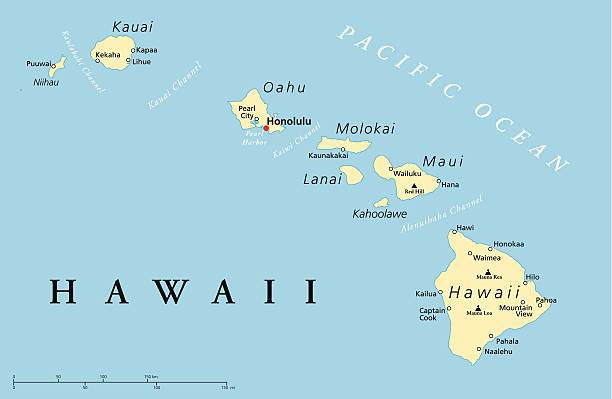
Map of the Hawaiian islands furnished courtesy of istockphoto.com
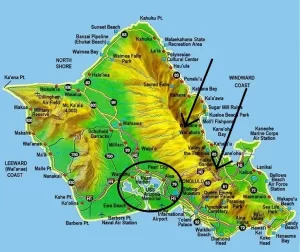

The image above shows an aerial photograph of Pearl Harbor in present times with the Honolulu international airport to the bottom left-hand side. Image courtesy of Wikipedia.org
This second lie was actually far worse than the first lie because the second lie was delivered to insure that proper preparations against an aerial attack on Pearl Harbor were never made. It also appears that both Kimmel and Short were misinformed about Japan’s impending attack on their areas of responsibility because both men were being set up as scapegoats. The Zio-American Empire’s top leadership in Washington D.C. made sure to never mention the presence of Japanese oilers ships to Kimmel. No mention of Japan’s oiler ships was ever made to Kimmel because any mention of Japanese oiler ships sailing with a fleet of carriers and battle ships would have left Kimmel immediately smelling a rat.

Image courtesy of booru.soy
Kimmel would have immediately smelled a rat if he were told that the Japanese fleet was sailing with oiler ships because Kimmel knew that the Japanese had a string of supply bases which were certainly able to provide direct support for any of their movements towards the south, so any oiler ships would not have been needed if these Japanese ships were heading to the Dutch East Indies. At this same time, some nonsensical ship deployments for the American Navy were also ordered by Washington and then these idiotic ship deployments were later blamed on Kimmel:

Image courtesy of knowyourmeme.com
On December 7th:
(1) The carrier USS Wasp was on the East Coast of the US in the midst of a major overhaul: legitimate.
(2) The carrier USS Saratoga was two days out of San Francisco and heading for Pearl Harbor after having just completed a major overhaul: legitimate.
(3) The carrier USS Enterprise was west of Oahu training air crews: legitimate.
(4) The carriers Lexington and Yorktown were sailing west of the Panama Canal protecting it from surprise attack: this made absolutely no logical sense.
In the days leading up to their attack on Pearl Harbor, the Japanese navy was not about to attack the Panama canal while leaving an alerted and intact US Pacific Fleet between them and home waters.
(5) The American aircraft carrier Hornet was sent to the British Gilbert Islands that sit west of the Hawaiian archipelago to watch that approach. This too made absolutely no logical sense.
In this case, the British would have alerted the US Pacific Fleet of any approach from the direction of the Gilbert Island days before the Japanese carriers got to within striking distance of Pearl Harbor.
(6) The heavy cruisers Indianapolis and Minneapolis were ordered out on patrol; now get this, far to the SOUTH of the Hawaiian Islands! In this case, these two heavy cruisers were sent in the opposite direction from where Washington knew the attack on Pearl Harbor was coming.
After the Japanese attack on Pearl Harbor, both Kimmel and Short were court martialed for negligence by the very same traitors who framed them to hide their own guilt. MY POINT HERE IS THAT THE ZIO-AMERICAN EMPIRE’S COMMANDERS HAD PLANNED FOR PEARL HARBOR TO BE ATTACKED ALL ALONG!!!
Kimmel died a broken and dejected man and Short died as a deeply embittered man. After their deaths, both of these mens’ families sued the US Government to clear their names. For both families, federal judges threw their cases out of court and upheld the convictions for both Kimmel and Short.

Image of Navy Admiral Husband E. Kimmel furnished courtesy of wikipedia.org Yes, Husgand E. Kimmel was married, so he lived up to his namesake. Mr. Husband E. Kimmel had a wife named Dorothy Kimmel ( formerly Dorothy Kinkaid)
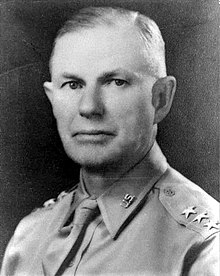
Image of army General Walter Campbell Short furnished courtesy of wikipedia.org ( Not sure how tall this man was)
Part Ten – A Personal Interlude: My Visit to the USS Arizona Memorial
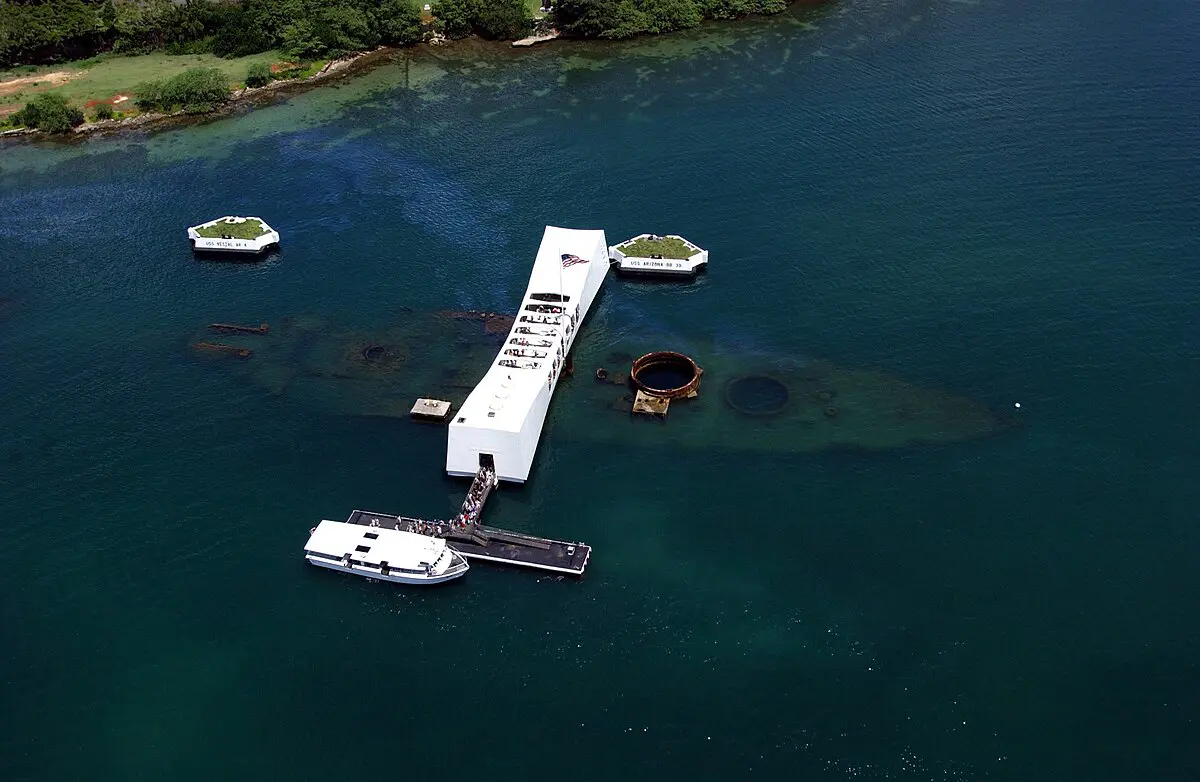
View of Pearl Harbor’s USS Arizona Memorial complex furnished courtesy of wikipedia.org
Close up image of the USS Arizona Memorial complex furnished courtesy of wikipedia.org
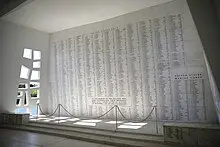
Image of the names of lost crew members from the USS Arizona furnished courtesy of wikipedia.org

Image of visitors at the USS Arizona Memorial complex furnished courtesy of wikipedia.org
Circa 1977 – 1980, I was a Gunner’s Mate serving on a US Navy Guided Missile Destroyer that was homeported in Pearl Harbor. A cousin of mine was stationed on another destroyer that was also homeported there. One day, we both decided to visit the USS Arizona Memorial. (Details of the USS Arizona’s sinking will be addressed later.).
When we visited the USS Arizona memorial, we both stood almost in shock as we looked at the names, and ranks or ratings of 1,000+ members of the ship’s crew whose bodies are forever entombed in this wreck. (The bodies of 100+ members of the Arizona’s crew were recovered and buried in a National Cemetery on Oahu, and the remaining names are engraved in the interior surface of the marble that forms one end of the memorial.
The names of over 50 Gunner’s Mates are there on that memorial’s marble wall of the dead, plus the name of the ship’s Gunner (Warrant Officer). Included in the number were seven CPO’s (Chief Petty Officers). Also, this list of the dead includes 30 Water Tenders/Boiler Technicians which was my cousin’s rating in the navy. This list also includes four PO’s — now this struck home! Myself and my cousin could almost see our names listed on a similar memorial one day. But that was not the worst of it; when we visited the memorial, family members of the dead seamen were still brining flowers and little packs of candy hearts to the memorial complex. When I say these relatives of the deceased visiting the memorial, I was moved very deeply and I simply stood quietly as tears ran down my cheeks.
You see, when I visited the USS Arizona’s memorial, I already knew that these dead sailors had been deliberately sacrificed, although I know vastly more about this sacrifice now than I did on that day. I also felt absolutely no anger against the Japanese because I already understood that they had been forced into making their attack.
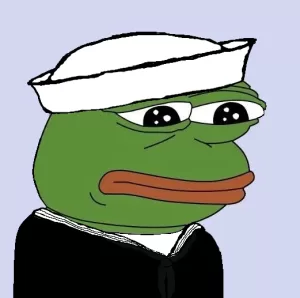
That day, I shed tears for 1,100+ of my fellow sailors (All Aryans, except for a small number of Black stewards) who were MURDERED to satisfy Jewish ambitions and corporate greed. That day at the USS Arizona memorial, I shed tears of sadness, plus I kindled my rage AND determination to work for as long as it would take to see that justice would be finally done for the USS Arizona’s dead crewmen.
Part Eleven – The Combined Fleet Staff: Preparing the Attack
The Japanese Combined Fleet at the time included the previously mentioned heavy carriers plus the supporting fast battleships, there were also heavy and light cruisers, destroyers, fleet and midget submarines, plus the oilers that would take part in this operation. Admiral Isoroku Yamamato was the Commander in Chief of the overall combined fleet that attacked Pearl Harbor, while Admiral Chuichi Nugumo, who was a specialist in carrier operations, and commanded the actual strike force. (Later in the war, on the island of Saipan Nagumo would commit hara-kiri rather than surrender. What secrets must have gone with him?)

The point to remember is that there was no single father of the Pear Harbor attack. Japan’s Pearl Harbor attack happened because everyone knew that if war could not be avoided with the US, then the US Pacific Fleet at Pearl Harbor would have to be somehow neutralized in a surprise attack.
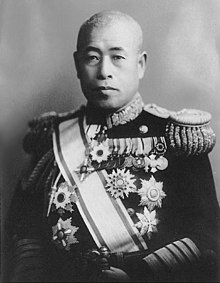
Image of Admiral Yamamoto circa 1940 furnished courtesy of wikipedia.org
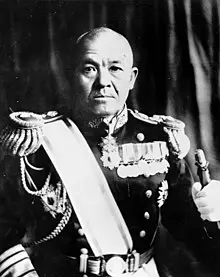
Image of Admiral Nagumo circa 1941 furnished courtesy of wikipedia.org
Earlier in the year of 1941, at a top-secret meeting of the Combined Fleet Staff met on board the battleship Nagato (Nagato is a Japanese province) which was Yamamoto’s flagship. During this meeting, Japan’s top naval commanders were given the assignment to make detailed plans for carrying out the attack on Pearl Harbor. During this set of meetings on the Nagato, a series of tabletop exercises (wargames) enabled the Japan’s top commanders to determine what was required for a successful operation against Pearl Harbor. This set of wargames were run on a contingency basis in case such plans were ever needed, then these plans were secretly filed away until the oil embargo made its implementation a matter of life or death for Japan. The staff officers who met on the Nagato were chosen for their high intelligence, their attention to meticulous detail, and their ability to keep quiet.
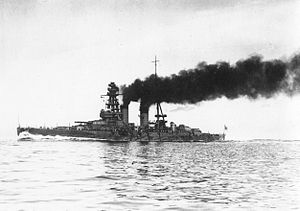
Image of the Japanese battle ship Nagato furnished courtesy of wikipedia.org
The gathering place for the carrier strike force was an anchorage at Paramashiro in the Kuril Islands. At that time, the Kuril Islands were an uninhabited chain of islands that belonged to Japan which sit to the north of Hokkaido. When the operation to bomb Pearl Harbor, individual ships departed seemingly at random from Japanese home waters and then headed north once they were well out to sea. The carriers and battleships wouldn’t need refueling during this operation and the cruisers would only need it on the way back to Japan. However, the destroyers would need fuel periodically while both going and coming towards the distant Hawaiian Islands. It is worth noting here that the Hawaiian Islands are the most geographically isolated island chain on the planet in the sense that they are the furthest archipelago from any continental landmass.) That being said, the oilers were too slow to accompany this task force on the way out to Pearl Harbor. There was also the danger of the strike force being discovered on its outbound voyage, either directly or because of the presence of oilers.
The decision was eventually made to have the Pearl Harbor naval taskforce initially make a voyage far to the north and off of the normal shipping lanes. This decision to gather in far northern waters was made because Japanese meteorologists determined that the waters off the Kuril Islands would be experiencing continuous stormy weather during the northward voyage which would help to conceal the task force and its oilers. The oilers began to leave home waters first and then moved to take positions at predetermined intervals along the route of the task force. The biker ships would orbit in place acting as sort of floating gas stations until they were picked up by the task force on its voyage back to Japan.
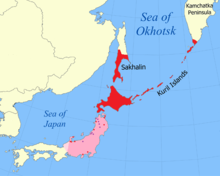
The image above shows the Kuril Islands and the the original habitation range of this island chain’s native Ainu people. Image courtesy of wikipedia.org
From my own personal experience serving on board a US Navy oiler, I can attest to just how dangerous Unrep (The term “Unrep” ferrets to Underway Replenishment – transferring fuel, stores, personnel, and ammunition while the ships are moving through the water and moving closely parallel to each other.) is under ideal conditions. But in heavy seas like the Japanese were doing near the Kuril Islands, this process becomes many times more dangerous! On the way to the northern rendezvous point, five Japanese sailors were swept overboard by waves during refueling operations, and in such heavy seas there was zero chance of picking them up.
A note on Japanese losses. There were the crews from midget submarines that were lost in their abortive part of the attack. Also, the crews of the nearly thirty aircraft were also lost during the attack on Pearl Harbor, therefore, the total Japanese deaths from Pearl Harbor’s attack would number somewhere in the neighborhood of 50—75.
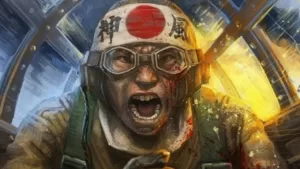
The island of Oahu is actually not all that big, you can drive all the way around thi island in much less than half a day.
Military installations on Oahu involved in the attack:
(1) Kaneohe Naval Air Station on the North Shore of Oahu
(2) Ford Island Naval Air Station in the middle of Pearl Harbor
*(3) Ford Island Naval Fuel Depot – This would have been the last thing attacked if the fourth attack wave had not been called off. As would have also been the oiler USS Neosho which was tied up there. These installations were left to last because when the tank farm and the oiler ship caught fire, the resulting smoke would have completely obscured the harbor.
(4) Ewa Field which is next to the entrance to Pearl Harbor and also next to a US Marine Corp Air Station
(5) Wheeler Field (now an Air Force Base) which is near the center of the island. USAAC base (US Army Air Corps).
(6) Hickam Field (Now AFB), which sits between downtown Honolulu and Pearl Harbor. This was the principal USAAC base on Oahu.
(7) Schofield Barracks, which is the principal US Army base that is located in the central part of the island of Oahu. This place was to be attacked only as a target of opportunity and not part of the original plan.
*(8) Fort Shafter was a US Army installation located in downtown Honolulu which consisted of a single tall office building that served as headquarters for the US Forces in the Pacific. The Japanese thought about attacking this building, but decided that its relatively small size and its deep basement made a successful attack highly unlikely.
The Japanese carriers that attacked Pearl Harbor carried a combined total of just under 400 aircraft, and these aircraft carriers were faced with the daunting task of figuring how to put all of those airplanes into the air within a relatively small area and within a short amount of time. In the case of Pearl Harbor itself, the Japanese had to figure out a way to coordinate the movements of a large number of aircraft operating in a very small area without the whole thing degenerating into total, ineffective, and disastrous chaos.
The first things to be attacked on Oahu were various airfields, and this was done to eliminate the chance of locating the Japanese carriers and launching an aerial counterattack. Priority targets would then become Zio-American aircraft carriers, provided they were present in Pearl Harbor, then battleships, and finally other ships. The Imperial Japanese Navy launched their airstrike from east of the Hawaiian Islands because Japanese staff meteorologists determined that the winds over Oahu would be coming in from an easterly direction that morning and this would make launching heavily laden air planes into the coming wind easier. In turn, launching the attack from the east of Oahu would also give the returning airplanes a tailwind behind them which would help them fly faster and conserve fuel.
It was determined that the initial attack would have to be made in two waves because of the limited aerial space over the target area and each wave would consist of a number of different flights. Each attacking wave would have to approach their assigned targets according to a carefully worked out schedule, and each wave would have to maintain a precise speed over a precise flightpath if they were to successfully attack a precise target within a given amount of time. Each successive wave would also have to clear themselves from their assigned area as soon as possible to let the next group execute their prescribed tasks. Every group of incoming airplanes arrived from a variety of directions at different times. Who else but the extraordinarily highly motivated, disciplined, and well-trained pilots could have pulled off such a vast and complex aerial ballet without one single hitch? During that time, the Luftwaffe certainly could have done something as complex as the bombing of Pearl Harbor, but I cannot think of anybody else.
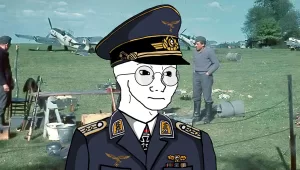
During the bombing of Pearl Harbor, there were no aerial collisions, nor even a single case of a Japanese pilot getting in the way of another pilot.
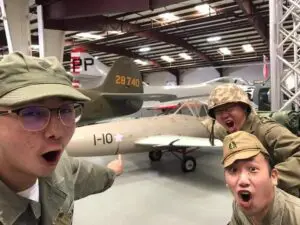
The book Fist from the Sky contains a map and timetable of this aerial ballet which is taken from that which was created by Japan’s Staff of the Combined Fleet. The original plan envisioned the First Wave returning to the carriers, re-arming and refueling, then relaunching just ahead of the return of the Second Wave who would do the same. In this plan, the First Wave would then be the 3rd Wave and the 2nd wave would become the Fourth Wave. The last two waves were canceled when Nagumo became convinced that it was all a trap. Nagumo believed that attacking Pearl Harbor might be a trap because he did not know where the US carriers were at that time, and he had been convinced that the secrecy of the operation was compromised even before his fleet Japan. ( He was actually correct!)
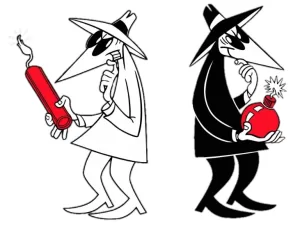
There is a small harbor in the Japanese home islands which is similar in layout to Pearl Harbor, though smaller. This harbor that mimicked Pearl Harbor was where Japanese carriers were sent to train their aircrews for the attack one at a time at irregular intervals, so as not to arouse suspicion. Before the attack on Pearl Harbor, the Japanese had no armor piercing bombs that were suitable for use against thickly armored battleships, so the staff had to improvise. In response to this challenge, they took a 14-inch armor-piercing round that was used by some of the Japanese battleships, then they gave this type of round a more appropriate detonator and stabilizer fins. One of these new improvised bombs would sink the USS Arizona. Later on, this same type of bomb would be used to sink the British battleship HMS Prince of Wales, and the battlecruiser HMS Repulse while it was sailing to east of Malaysia.
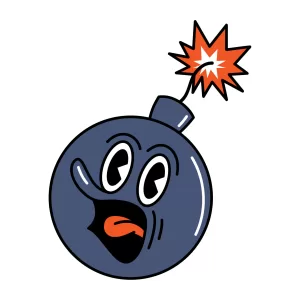
The waters in Pearl Harbor are really not all that deep and they rarely exceed 100-feet in depth. To obtain adequate running times for the torpedoes that were launched against the American battleships docked in Pearl Harbor, the Japanese torpedoes needed to be dropped in the part of Pearl Harbor called West Lock. West Lock is a branch of the harbor that juts inland directly opposite from Battleship Row. The problem with bombing the docked Zio-American ships with torpedoes stemmed from the fact that air-dropped torpedoes plunge to considerable depths before they return to their cruising depths and commence their final targeting approaches. In the case of West Lock, this meant that any torpedoes dropped from the air would initially plunge straight into the bottom of the harbor, so some way had to be found to slow the torpedoes down so that they would not plunge so deep; however, creating torpedoes that would not plunge so deep into the water when dropped also produce drag that would interfere with how the torpedoes ran.
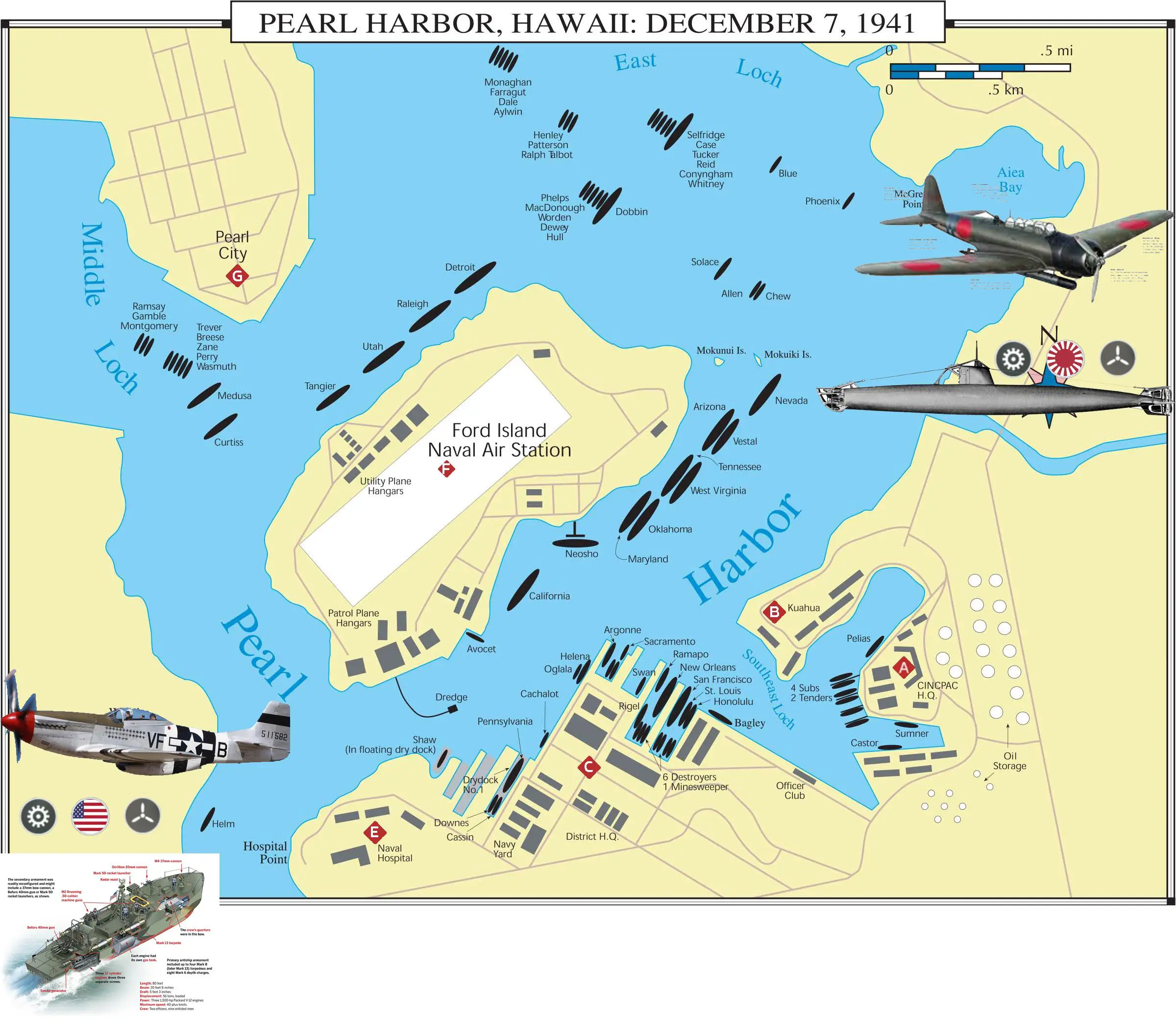
Map of Pearl Harbor on the day of Japan’s attack furnished courtesy of r/battlefiedlV on Reddit.com
The solution the Japanese navy came up with was so ingenious because it was so very extraordinarily simple and cheap. They Built wings out of a lightweight material, in this case balsa wood, and then they attacked these balsa wood wings to a bamboo frame that covered each torpedo. These Balsa wood wings were designed to slow each torpedo’s decent after it was dropped from an airplane. The glue holding the bamboo frame and its Balsa wood wings onto each torpedo was designed to be just strong enough to serve its one-time purpose. So, when one of these winged torpedoes struck the water in Pearl Harbor the wings would just shear off. After the attack, the Americans were puzzled for a time by the presence of all these sheets of balsa wood that were attached to bamboo frames that they found floating around in the waters of West Lock; the Zio-Americans did of course finally figure out why these bamboo frames and Balsa wood wings were used.
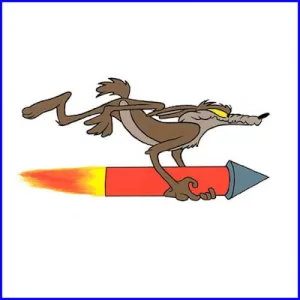
Part Twelve – Hiding in the Open, A Japanese Spy on Oahu
At the time of the Pearl Harbor attack, the Japanese had already developed a system whereby every place a ship could tie up or anchor in Pearl Harbor could be identified by a short and simple coded designation, and this system was developed as a precautionary measure well before the brewing conflict that pitted Imperial Japan versus the Zio-American empire and the British empire was brought to a head. In this coding system, each American warship received a similar designation that consisted of a series of letters and numbers which identified every ship in port and exactly where it was located.
An air attack on Pearl Harbor absolutely had to have current information so that the final preparations could be made. These preparations would have gone something like: flight A, from carrier B, will attack ship 443A which is tied up at dock C. Training had been so thorough that a given flight could be sent against any one of a number of targets. Using this code meant that the Japanese had to have a man on the ground to observe and make reports back to the Combined Fleet using a special shortwave radio transmitter. Getting the transmitter itself into the Hawaiian Islands proved relatively simple; it was broken down into its smallest components and each piece was individually smuggled into the Hawaiian Islands in diplomatic pouches carried by Japanese Diplomatic Officials who were traveling on legitimate business connected with the local Japanese Consulate. Getting the agent into Hawaii was another matter however.
The Japanese agent was a courteous and quiet young man is his late 20’s who was be speckled and rather nondescript, and this unknown fellow was assigned to the Japanese Consulate in Honolulu as a minor clerk.

There in Hawaii, this spy rented a home for himself in the mountains that was within sight of Pearl Harbor. The home that this young man rented gave him a partial view of Pearl Harbor, and his well-known hobby was photography, so he became well-known for his photographs of the magnificent scenery around Oahu, which he would frequently sell to tourists and others. No, he never photographed Pearl Harbor, just the areas around it. This agent’s hobby got people and the authorities used to seeing him driving about and taking photographs.
This spy could open a window where he lived in order to let in the light and breeze like everybody else did, then he could relax within his home and observe that part of the harbor that was visible with a set of binoculars. As for observing other parts of Pearl Harbor, Pearl Harbor’s wily Japanese spy would just periodically glance at the harbor as he was driving around Oahu or taking photographs — no harm in just looking you know. How could anybody have known that this young man had a photographic memory?
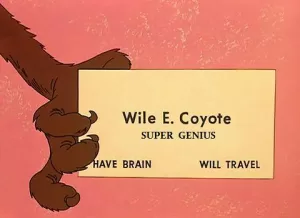
Yes, this Japanese spy was truly a man of many talents, and he was also so young. This Japanese spy took the parts of the transmitter that were sent in from Japan and then he reassembled these parts, and his secret radio transmitter worked perfectly. After assembling his radio transmitter, this Japanese spy created a hiding place for this transmitter within a wall of his house. Within this man’s home, a particular piece of paneling covered the hiding place for his transmitter. Unlike the rest of the paneling, the transmitter’s hiding place was held in place by wood screws instead of nails like the rest of the paneling in this rented house. However, this wily Japanese spy altered the heads of the wood screws that were holding the secret panel in place to look like nails, and these wood screws looked like nails unless you looked closely, I mean like really closely. But what about the aerial? Just be patient, I will get to that a little later.
Before the attack on Pearl Harbor, the Zio-Americans discovered that clandestine shortwave radio broadcasts were originating from somewhere on Oahu. The FBI was able through triangulation to determine the neighborhood where these cryptic broadcasts were originating, which just happened to be the neighborhood where Japan’s spy lived. So right away, suspicions were focused on him, yet after repeated searches, the Japanese spy met such actions with total cooperation and the utmost courtesy —hey, I have nothing to hide! The Zio-Americans also found nothing after every search. They came in when he was not home — still nothing. The Zio-American authorities searched all the homes in the area and interrogated all of the people in the neighborhood — still nothing. One of the Zio-American agents who had just finished searching the Japanese spy’s home bought one of his photographs as a gift for his wife at a most reasonable price. Still, the telegraphic broadcasts continued.
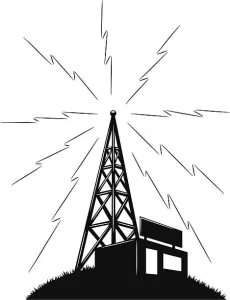
The Japanese spy had no idea when or even if Japanese forces were going to attack; he had just been given a job to do and he had no need to know anything about an impending attack because his job was to simply send daily reports — that was it. By the way, in case you were wondering, arresting a member of another country’s diplomatic corps on suspicion can be considered legitimate grounds for war; you have to know before you dare to make any moves against a foreign nation’s diplomatic personnel!
The FBI figured that somebody could successfully hide the transmitter from them as well as put on a very convincing act if they were good enough actors, but what about the blasted aerial? That had to be very large and impossible to conceal, yet there was no trace of it, but the Zio-Americans never realized that this mysterious aerial was actually parked right in front of them the whole time. That having been said, the aerial was made to appear as something quite innocuous. All of the Zio-American empire’s questions were answered after the attack on Pearl Harbor had taken place and the staff at the Japanese Consulate had been expelled back to Japan. After the attack on Pearl Harbor, the entire staff at Japan’s office in Honolulu were sent back to insure the Japanese would return American Foreign Service Personnel who were stationed in Japan.
After the Japanese consulate staff on Oahu left the island, The FBI took their time and went over the spy’s home with a fine-toothed comb in a way that they were not able to previously. (The Zio-American Empire’s internal federal law enforcement agency named the Federal Bureau of Investigation, or the FBI for short, was founded in 1935, so this agency handled the Japanese spy’s case. Presently, the FBI is totally controlled by Jewish bolsheviks and ultra-Zionists, so this organization has now degenerated into a North American rendition of the old Communist Cheka.)

Image of an FBI Glow Nigger furnished courtesy of knowyourmem.com
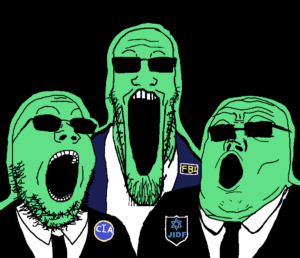
Concerning the departed Japanese spy, the FBI finally discovered the hiding place for the radio and the transmitter. Before departing, the Japanese spay had poured sulpheric acid all over the transmitter and destroyed its innards. The spy’s papers had also been burned and then had acid poured on them as well. During their investigation, the Zio-American investigators discovered a small wire which could be connected to the transmitter from the spy’s home. The Zio-American authorities traced this small wire through the walls of the house, then outside where it ran buried through a small vegetable garden through to a clothesline where the spy hung his laundry. The wire on that end could be uncovered and quickly connected to the clothesline in the yard. The Zio-American investigators noted that the clotheslines were actually radio aerial wires with their insulation stripped off.
While he was stationed at Oahu’s diplomatic office, the clever Japanese spy would go out to his backyard and hang out his freshly washed laundry; then, when his neighbors were not looking he would quickly connect the wire from his home to the clothesline wires. After hanging out his laundry and connecting the radio wire, he would go in his home and send his daily report. When the spy’s laundry was finally dry, he would take his clothes off of the line and then disconnect the aerial — this ploy fooled the Zio-Americans for quite a while. I mean who ever heard of hanging out your laundry on the aerial for a shortwave radio transmitter. Whatever happened to the individual under discussion? As far as I know, towards the end of the war he vanished, and nobody has heard hide nor hair of him since.
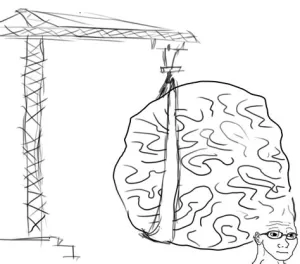
Part Thirteen – Did the Japanese, and Hitler, Realize the Actual Extent of the USA’s Resources?
The idea that Germany, Japan, and Italy were unaware of the USA’s full potential is simply asinine and not worth repeating! The notion that the Axis powers were unaware of the Zio-American Empire’s vast population and resources, along with everything else regarding the Axis Powers in orthodox history is of limited and often nonexistent utility; that is, provided that one is actually looking for the truth.
Before the break in diplomatic relations between the US and Japan, various highly capable attaches (including industrialists) connected to the Japanese Embassy in Washington were sent all over the United States to determine through legal observation and non-classified sources the true extent of the US Population, the productive capacity of American Industry and Agriculture, as well as the full extent of US Natural Resources. The United States was at that time, but not now, completely self-sufficient in everything, except for two essential strategic minerals: chromium ore and nitrates. Chromium ore was needed to make high grade steel such as that which is used to make armor plating for tanks and gun barrels. The US imported chromium ore from South Africa. Nitrates were needed to produce explosives, and the US imported this raw material from Venezuela. In the years before World War II, the US maintained a brutal and corrupt puppet government/dictatorship in Venezuela which ensured a secure supply of nitrates. Various reports about the Zio-American Empire’s resources were compiled into one detailed study by the Japanese Foreign Office and this report’s predictions actually turned out in the end to be reasonably accurate.

The Japanese study of the Zio-American Empire was deemed to be of such vital significance that it was passed on to the other Axis Powers and to Hitler personally. By contrast, Hitler had been ill-served by his own attaches in the US who turned out to be part of the (((German Resistance Movement.))) The German traitors deliberately and systematically underreported what they discovering while traveling around the Zio-American empire in hopes that Hitler would go to war with the US in an ill-informed and half-cocked fashion; however, this plan was derailed when the Japanese sent their study to him. After discussions between Himmler and Hitler, Himmler then secretly sent certain members of the SS Intelligence service to North America to try and determine the accuracy of the Japanese report. The SS report confirmed what the Japanese report had outlined.
This foreknowledge of the Zio-American Empire’s resources during the 1930s is a now a forgotten reason why the Axis, including Hitler, tried to if at all possible to avoid going to war with the United States. The Axis leadership knew it would be a major calculated risk if they were ever forced to declare war against the Zio-American Empire, even if they were very nearly victorious in the end. In the end, the Axis powers were only defeated by a combination of bad luck and internal treason.
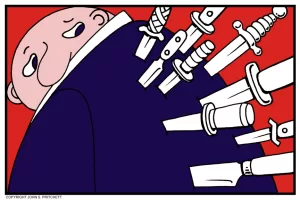
The oft-mentioned opposition to declaring war against the Zio-American Empire on the part of the Imperial Japanese Navy in general, and Admiral Yamamoto in particular, had to be seen in this context. Yes indeed, the Japanese and other Axis allies were adamantly opposed to entering a war against the Zio-American empire, THAT IS UNTIL, war was forced upon them. “I fear all that we have done is awaken a sleeping giant.” said Admiral Yamamoto post Pearl Harbor. Yes, he did say that. When Yamamoto voiced those words, he was simply echoing the thoughts of many other Japanese — they all realized the extent of the gamble that they had been forced into.
“We shall run amok for six months and then we will begin to lose the war.” – Admiral Yamamoto. Orthodox historians have taken this well-known quote out of context and twisted its meaning. What Yamamoto was ACTUALLY saying was: Japan had just six months to win the war, at which point it would become a War of Attrition which they had no hopes of ever winning. The decisive Battle of Midway which Japan only lost through bad luck as I have previously said occurred right around that six-month mark.
The bloody and very destructive naval warfare that the Empire of Japan and the Zio-American Empire engaged in across the South Pacific following the battle of Midway resulted in the Imperial Japanese Navy giving considerably more than it got. The problem for Japan was that the US could easily and quickly replace the ships, the aircraft, and the men, they lost while the Japanese could not. The Imperial Japanese Navy was critically weakened in the aftermath of the Battle of Midway; however, the US Navy was becoming progressively stronger. By way of example, the last heavy carrier commissioned by the Imperial Japanese Navy floated out of its shipyard in 1945, and this vessel was named the Shinano whose building time was somewhere between 3 and 4 years at a time. By contrast, the Zio-American empire could build one new aircraft carrier in five months.

Part Fourteen – Little Known Incidents During the Pearl Harbor Attack
This part is not a blow-by-blow description of the air raid; instead, is intended to fill some gaps in the story and to correct some errors that are commonly told.
(a)American Military Losses:
According to the United States Navy, a total of nearly 30 ships suffered varying degrees of damage; however, only eight of them were total write offs:
Battleships – Arizona, Oklahoma, and West Virginia
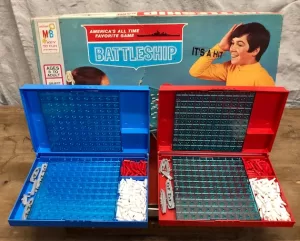
Destroyers – Cassin, Downs, and Shaw
Target Ship – Utah
Minelayer – Oglala
Repair Ship -Jupiter
There were around 300 aircraft stationed on Oahu, of which roughly 90% were destroyed.
The total number of Zio-American service men killed in action was close to 3,000, of which nearly half of these losses occurred when the USS Arizona exploded.
(c)Kaneohe Naval Air Station –
This installation was closest to the Japanese carriers, so logically, this was the first place attacked. The Kaneohe Naval Air Station was put out of commission with all of its aircraft destroyed in a matter of minutes. Right away, the personnel at this base broadcast over the radio that they were under air attack and after 15 minutes, all hell started breaking loose everywhere else on the island of Oahu.
(d)Wheeler AFB and the Schofield Army Barracks
A large force of Japanese aircraft came down the island’s central valley from a northerly direction headed towards Pearl Harbor. For those who are not familiar with Oahu, this island has a large central valley that forms a decent-sized flat plain. The central inland plains area of Oahu is where Wheeler AFB and the Schofield Barracks are located, and this flat plain also served as an excellent point of approach for bombing Pearl Harbor. During the initial attack on Pearl Harbor, part of this Japanese convoy of military aircraft peeled off from the main force and hit Wheeler; this attack destroyed all of the aircraft there. The Japanese commander of the fighter wing that was flying over the central plain of Oahu was ordered destroy any aircraft sitting at Wheeler Air Base, but he was also ordered to clear any anti-aircraft cannon installations along the approach to Pearl Harbor so that other aircraft that were soon to use this pathway would not get shot at from the ground. On the spur of the moment, this Japanese wing commander decided to lead his fleet over the nearby Schofield Army Barracks.
The Zio-American soldiers stationed at the Schofield barracks were assembled in formation on the parade ground that morning and they were holding morning muster when the Japanese Zero fighter group made a strafing run on their position. For the attacking Japanese fighters, killing the soldiers assembled for morning drills was like shooting fish in a barrel, so well over 200 Zio-American servicemen from the Schofield Barracks were killed that morning.
Image Courtesy of wojak paradise.net
(e)Hickam Air Force Base
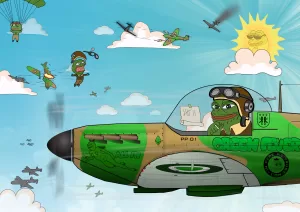
Image courtesy of foundation.app
There is a very common picture of a large formation of Japanese military airplanes coming in over Diamond Head with Downtown Honolulu and Waikiki Beach seen below. In this same iconic photo, the towering promontory of Diamond Head is seen on that side of Honolulu opposite Pearl Harbor. In this photo, these Japanese aircraft were on their way to attack Hickam Air Base.
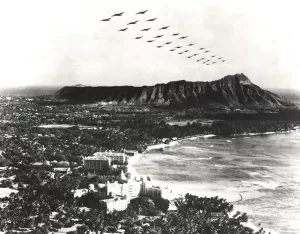
As these Japanese aircraft cleared Diamond Head they rapidly lost altitude until they were not much more than 100-feet above Waikiki Beach. The guests staying in the high-rise luxury hotels along Waikiki beach were attracted out onto their balconies by the roaring of the innumerable aircraft engines that were sometimes less than a hundred feet away from their windows. Not knowing what in the hell was going on, some of the guests smiled and waved at the Japanese men who were flying their aircraft. The Japanese military pilots noted the hotel guests waving at them, so naturally, the Japanese pilots smiled and waved back. Surreal anyone?
Image courtesy of wojakparadise.net
The Japanese bombers hit the aircraft hangars at Hickam AFB, and these hangars were soon demolished and in flames. The escorting fighters, seeing that they were meeting no opposition, started strafing the aircraft on Hickam’s flight line which destroyed all of the taxiing aircraft on the field except for about 30 P-40 fighters. During this attack, a number of Zio-American fighter planes were shot to pieces and their pilots were killed while trying to take off.
At the time of Japan’s attack on Pearl Harbor, there was a long concrete-paved area running between two rows of hangers, and there was also a long line of P-40s sitting in front of the two rows of hangers. In order to attack the rows of sitting P-40s, the Japanese Zeros had to fly in at a low altitude and then make a sharp climb at the end of their strafing runs in order to avoid smacking into a large building located at the end of the rows of hangers.
This large building that sat at the end of the Hickam air base strafing runs had a set of huge windows that looked out between the rows of airplane hangars; this building with the big windows was the base’s mess hall. That morning, the Japanese were only interested in destroying the parked P-40s; however, many of the stray bullets that were earmarked for the parked P-40s wound up going long and cruising through the huge windows of the base’s mess hall. These stay aircraft-borne cannon rounds sauntered into the base’s mess hall and would up killing a large number of Zio-American fighter pilots who were eating their Sunday breakfast at that time. At that juncture, the Japanese had no way of knowing they had just hit the jackpot by killing around 60 P-40 pilots. In the aftermath of Japan’s attacks, Hickam air base was left with around 30 flyable P-40s and nobody living who knew how to fly them properly.
Image courtesy of wojakparadise.net
The interior walls of Hickam airfield’s dining room still bear the scars left from when this facility was struck by Japanese bullets. These preserved bullet holes in the Hickam dining hall now constitute a memorial to those who were killed during the Pearl Harbor attack. I have also talked with men who were stationed at Hickam in recent years, and many of them say that the base’s mess hall is still haunted by the spirits of those who were killed there during the Pearl Harbor attack. Seeing the damage done to the walls of that building while you are sitting and eating your breakfast on a Sunday morning can make your skin crawl, so I am told.
(Note) As I have said before, any carriers present would have been the #1 priority of attack as far as targets were concerned, and any battleships were designated at the #2 priority. Everything else was officially designated as targets of opportunity once the battleships were dealt with.
(f)USS Shaw (destroyer) was destroyed along with a YTM (Yard Tug Medium) while sitting in a floating dry dock and undergoing an overhaul. The USS Shaw was in drydock at the end of the Pearl Harbor Naval Shipyard which is located at Hospital Point. Hospital point rests on the starboard side of Pearl Harbor’s entrance atop a grassy headland that sports the Pearl Harbor Naval Hospital. The Shaw was stuck by a Japanese bomb which blew fragments of the destroyer, the nearby tugboat, and the drydock all over Hospital Point.
To this day, when the grass is mown around the hospital, the mowers will sometimes strike small steel fragments and send them hurtling through the air. There are still huge leather curtains that have to be pulled over the hospital’s windows to stop steel fragments slug by lawnmowers from going through the windows or inflicting property damage. There are still so many of these small metal fragments buried in the land surrounding the hospital that it has proven impossible to remove all of them.
(g)USS Oglala (minelayer) was tied up to a pier in the naval shipyard where she was struck by several bombs and then capsized.
(h)USS Phoenix (light cruiser). This vessel was tied up at a finishing pier in the shipyard.
The Japanese determined which piers in Pearl Harbor were made of wooden and which were made of steel-reinforced concrete. You will see why this was important.
On the morning of Pearl Harbor’s attack, the USS Phoenix was tied to a massive wooden pier, and the Japanese dive-bomber pilot who attacked this ship was well-aware that this pier was made of wood. Rather than send his bomb against the armored deck of the light cruiser with problematic results, the Japanese pilot instead dove at an angle and dropped a large bomb with a delayed-action fuse against the pier and not the nearby ship. This bomb went through the pier and then through the thinly armored side of the USS Phoenix where it finally exploded in the ship’s engineering spaces. The Phoenix’s engineering section housed the ship’s engines, boilers, and electrical generators. This pier-penetrating Japanese bomb put the Phoenix out of commission for some time and killed 50+ of her crew.
The Phoenix (named after Phoenix, Arizona) was eventually repaired and returned to service. At some point after the war, she was sold to Argentina and renamed the General Belgrano. The General Belgrano was later sunk by a British submarine with the loss of over 600 Argentine sailors during the Falklands War. During the Falklands War, the UK and Argentina agreed to limit hostilities to a delineated area around the islands, and the Argentines were careful to live up to this agreement; however, the British were not. Naturally, the Argentines thought that the British was also going to live up to their end of the agreement, but the Argentines were taken totally by surprise when the General Belgrano was treacherously torpedoed outside of the mutually agreed upon war zone.
Image courtesy of wojakparadise.net
(i)USS Pennsylvania (battleship), USS Casin and USS Downes (destroyers). All three of these ships were in the same drydock together within the Pearl Harbor Naval Shipyard. The battleship was resting in front and the two destroyers which sat side-by-side in the rear of the facility next to this installation’s main gate. The battleship was already badly damaged by Japanese dive bombers when a bomb struck one of the destroyers causing both ships to explode. The two destroyers were reduced to scrap during this attack, while the Pennsylvania suffered massive additional damage. This drydock’s two massive steel gates were wrecked which caused massive amounts of water to come pouring into the drydock. The drydock itself, which was formed from massive sections of steel-reinforced concrete, also suffered serious structural damage around its back end. Repairs on this drydock took the best part of a year. Early on, the Japanese had also destroyed the US Navy’s drydock at Cavite Naval Base in the Philippines, so for the best part of 1942 Zio-American Empire’s navy had no drydocks west of the North American coastline.
Salvage on this damaged drydock involved first removing wreckage from the two destroyed destroyers and the wrecked dock gates. The next phase of this drydock repair project involved cutting-away the first 150 feet of the drydock, then constructing new gates. Only after a new set of gates was finished could this drydock be pumped out and the job of repairing the battleship begin.
(j)USS West Virginia (battleship) This vessel was tied up at Battleship Row. The USS Neosho (oiler) was tied up at Ford Island Naval Fuel Depot.
Battleship Row is a series of huge concrete and steel mooring keyes that run just offshore of Ford Island. These keyes are intended to accommodate large warships, like battleships. When the attack on Pearl Harbor started, the USS West Virginia was able to get underway briefly. Except she only moved less than 50 yards before sinking. This sinking kept the Neosho which was not attacked from getting away from the fuel pier. After the Pearl Harbor attack, the Neosho was blocked in place until the battleship West Virginia could be refloated and moved.
The USS Neosho was later sunk with all hands lost by the Japanese during the Battle of the Coral Sea.
(k)USS Enterprise (carrier). Unbeknownst to the Japanese, this vessel was approaching Pearl Harbor from the west when the attack started. At that time, the USS Enterprise was almost out of fuel and Neosho unable to move, which meant that the Enterprise had to keep coming towards Oahu attack or no attack. If the Japanese had launched one more wave, then they would have also bagged the Enterprise. If the enterprise was trapped within the narrow confines of the harbor, then she would have been a sitting duck. As it was, the Enterprise had to be refueled by small fuel lighters who could make their way through all of the wreckage between the carrier and the fuel pier. Even working as fast as possible, it still took several hours for the Enterprise to get refueled.
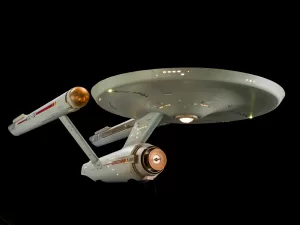
(l)USS Utah (target ship). During the Japanese attack, the USS Utah was anchored at the tip of Ford Island on the opposite side of the USS Arizona. Originally an old battleship, the USS Utah had been decommissioned, stripped down, and then converted into a target ship that maintained a minimal crew of 50-60. The Utah was used for gunnery practice, which meant that firing ships would not actually try to hit the Utah, but just try get within a certain distance of this old vessel. From the air, the old Utah resembled an aircraft carrier, however, the Japanese spy was ordered to not keep much attention focused on this unimportant vessel because the Utah was not considered to be worth the cost of bomb that it would take to sink her. Disobeying on-the-spot direct orders, she was sunk by a flight of bombers Japanese bombers anyway. Needless to say, the pilots who bombed the Utah were severely disciplined for their insubordinate puerility.
When bombed, the Utah capsized with all hands on board, which partially blocked the nearby channel. Efforts to salvage the Utah and rescue the unknown number of men trapped inside her had to be abandoned when it was learned that her keel was broken. The Utah’s broken keel made any rescue efforts entirely too dangerous. Tragically, tapping from inside the Utah’s keel persisted for three weeks before finally ceasing. I heard several people say that you can still sometimes hear tapping at the spot of the Utah’s sinking if you are there late at night. Unable to remove the Utah’s wreck, the Zio-American navy was finally forced to figure out a way to roll this shop over in order to clear the channel. The Utah still sits in her final resting place with part of her rusting bottom sticking out of the water.
(m)USS Oklahoma. This vessel capsized while tied up at Battleship Row and was later part of a massive Parbuckle Salvage operation. Parbuckle salvage operations involve righting a sunken ship and then raising it to surface level.

The interesting and little-known part about the USS Oklahoma’s fate is the way that this ship’s wreck was salvaged and cleared away. After the Oklahoma sunk, US navy workers attached a numerous series of 2 1/2-inch steel cables to her from bow to stern. The other ends of these numerous steel cables were connected to a line of land-based winches. As each cable reached Oahu’s shoreline, it was anchored with a huge cement pad. This tripod cable mount was constructed to allow these salvaging cables to only move in one direction. Pulling together in perfect unison, these winches were able to pull the ship upright. To keep the ship from rolling back over when the cables were disconnected, a large ocean-going barge was next welded to each side of the Oklahoma’s wreck. The Oklahoma’s wreck was finally towed to a port on the West Coast, then cut up and sold for scrap metal.

Image of the USS Oklahoma’s salvage operation furnished courtesy of wikipedia.org

Image of USS Oklahoma on March 19, 1943 courtesy of Wikipedia.org

Image of the winches that were used to salvage the USS Oklahoma furnished courtesy of wikipedia.org
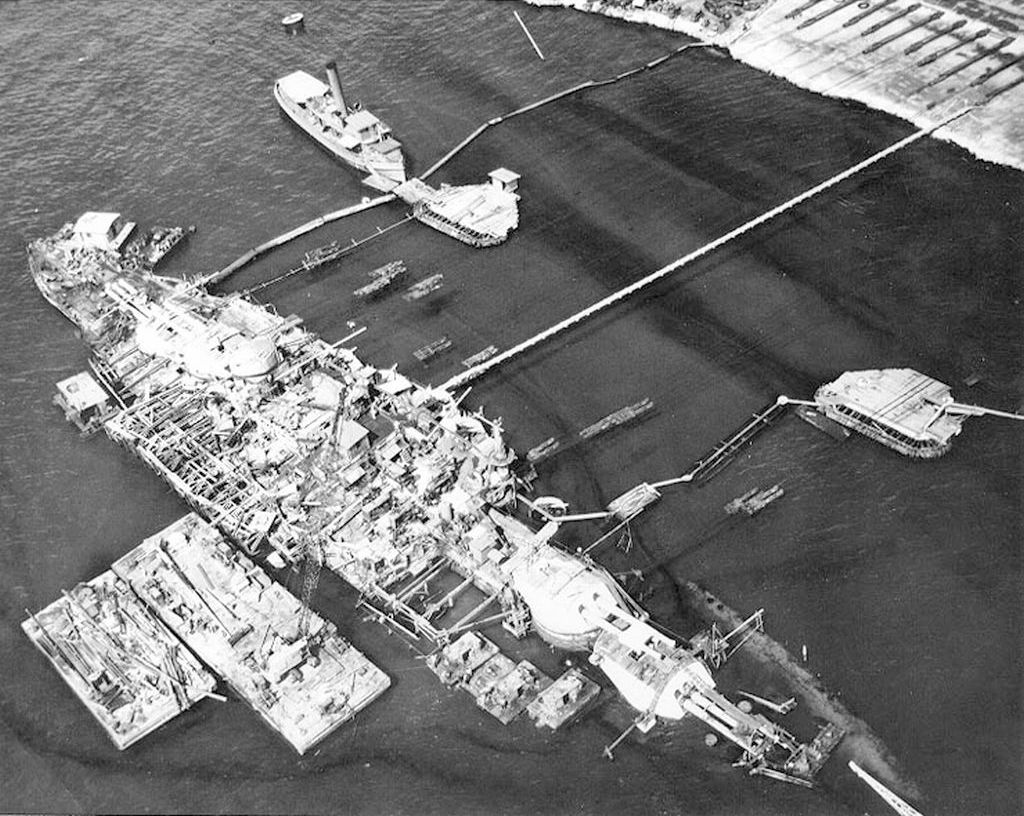
Image of USS Oklahoma on 20 September 1943 furnished courtesy of wikipedia.org The image above shows the USS Oklahoma’s wreckage soon before it was towed to the West Coast of North America to be sold as scrap metal.
(n)USS Jupiter (repair ship). This ship was tied up to the USS Arizona during the Japanese attack on Pearl Harbor. The Jupiter was brought alongside the Arizona only one day before the Pearl Harbor attack to commence a refit of the battleship. This was the only change in the harbor since the Japanese spy had sent in his last report, so the Japanese torpedo bombers came in unaware of the situation. The Japanese attackers dropped their torpedoes where they had been ordered, and of course these Japanese pilots intended these torpedoes for the Arizona. With the Jupiter now being in the way, it was now the Jupiter that took all of the Japanese torpedoes which were meant for the Arizona. After getting torpedoed, the USS Jupiter quickly capsized and sank alongside the battleship Arizona which now had only a few more minutes to live.
(o)USS Arizona (battleship). This vessel was tied up at one end of Battleship Row.
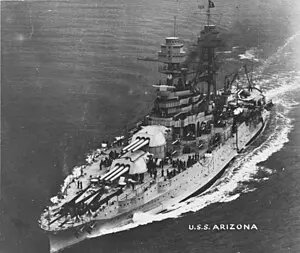
Image of the USS Arizona in 1931 furnished courtesy of wikimedia.org

Image courtesy of freepik.com

With the ill-fortuned Jupiter protecting her from torpedoes, it looked for some time like Arizona was going to be the only battleship to come through totally unscathed, then disaster struck. For the Arizona, disaster arrived in the form of a Japanese dive bomber that came down and released one of Japan’s jury-rigged armor piercing bombs on top of the ship. Coming down at a steep angle, the Japanese dive bomber dropped a load of ordinance that struck the front of the Arizona’s forward stack near the top.

This Japanese bomb slammed through the metal plating on the Arizona’s stack, then struck the bulkhead on inside of the ship’s stack about halfway down this vertical chamber, then this spunky bomb ricocheted and came back out through the front of the stack near its base. Next, this same feisty bomb went through the lower rear bulkhead in the forward superstructure where it finally stopped in a large dry storage compartment filled with 500 TONS OF BLACK POWDER where this lucky little fellow finally detonated!
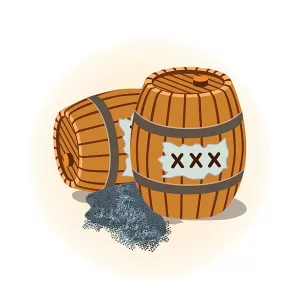
That bouncy bomb’s final coup de grace set off a chain reaction of explosions that lasted for a few seconds. The lower part of the Arizona’s superstructure contained a number of anti-aircraft guns and smaller cannons for the ship’s secondary armaments. The ammunition magazines from the anti-aircraft guns and secondary cannons exploded after the main explosion in the black powder magazine which then caused the powder magazine for the ships 14-inch guns to explode. All of the ship’s powder and other ordinance exploded which then caused her massive boilers explode as well.
Up into the 21st century, the pilot who sank the Arizona was still alive; however, only a handful of dedicated Japanese historians ever knew who this man was or where he lived (I am assuming this anonymous Japanese pilot is probably dead by the year 2023). This secretive Japanese pilot was a devout Zen Buddhist, so he passed his later years living quietly somewhere in Japan, and he always refused to grant interviews. The handful of Japanese historians who knew this man’s identity remained determined to respect his privacy.

When the Arizona exploded, the blast wave blew windows out of buildings in the downtown area of Honolulu which is nearly twenty miles away and stalled cars in downtown Pearl City which is nearly ten miles away. The USS Arizona’s detonation sent smoke, flames, and debris thousands of feet into the air.
The harbor where the Arizona was tied up was not very deep, not much over 100 feet. The shockwave from the Arizona’s demise struck the bottom of the harbor with such force that it bounced back and hoisted the 35,000-ton battleship at least 25 feet into the air. After the big blasts, the Arizona was lifted high enough for people near the shore of the harbor to literally see Ford Island under the ship. A Japanese plane that was passing overhead disintegrated from the Arizona’s exploding shockwave, and the dive bomber which dropped that fateful bomb was almost knocked out of the sky by this same explosion.

I heard a woman who worked at a large store in downtown Honolulu that sold fancy clothing relate the following story when I was over there. This store where that woman worked was several blocks back from the ocean and faced in the direction of Waikiki, and the front of this store had huge plate glass windows. When the attack started, the frightened women who worked in that store moved to the back began frantically discussing the situation with her coworkers: this move to the back of the store saved her life. When the Arizona detonated, an immense concussion hit the front of the store that shattered the front windows and hurled shards of glass into the store. All of this store’s clothing items were shredded when these front windows shattered. Despite losing their inventory, all of the women who worked in that store were next to the store’s rear wall, so not a single one them was injured.
The navy’s original idea was to raise the Arizona and then sell her as scrap metal, yet this wreck of twisted metal was only cut down as far as the O-1 Level before trouble started. The 100+ bodies that had been found in the upper part of the wreck had already been buried ashore at a national cemetery, yet further attempts to recover bodies were halted for good reason. Further salvage operations were halted in part because the ship’s keel was broken, so when the navy started messing with the hull itself, the remains of the Arizona started seriously moving about.

Image courtesy of plainfieldlibrary.net
The USS Arizona’s water-tight doors, which were deep underwater, had been holding back huge amounts of water, yet these hatches would spring open whenever the ship’s hull shifted, so these formerly empty spaces began to quickly fill with water during any ship movements, which in turn created a tremendous suction. A total of 15 salvage divers were sucked into the interior of the ship and lost in one tragic salvage operation.
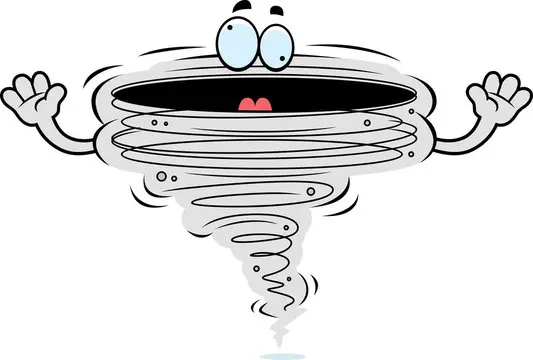
Image courtesy of Adobe Stock images
These lost divers are now entombed in the Arizona’s wreck along with the rest of the ship’s crew. After the 15 divers were lost, further salvage attempts were abandoned because of the danger. It was only many years later that the navy decided to build a memorial over the USS Arizona’s wreck. Sadly, the USS Arizona’s memorial never mentions any of the salvage divers — who were also navy men — that additionally remain entombed in the USS Arizona wreck.
Now comes the MYSTERY. Old-timey Black Powder has very little use in modern military applications because it generates way too much smoke, and it leaves behind a lot of residue which fouls gun mechanisms and causes them to jam. So, why was there a whopping 500 tons of old black powder stored on the Arizona to begin with? Also, why was it stored in a compartment that is intended to stock dry stores instead of being stored in a dedicated ammunition magazine like it is supposed to be? This little boo-boo is a blatant violation of long-standing naval regulations that date back to the days of wooden ships and iron men!
Image courtesy of wojakparadise.net
The official line is that only the ship’s captain who now lies entombed with his crew would have known the answer to that one: that my friends does not make any sense. Why would the USS Arizona’s captain put his ship in such mortal danger by storing 500 tons of black powder in the ship’s dry storage area? Storing 500 tons of explosive black powder in areas that are generally intended for things like canned food and toilet paper constitutes a very clear violation of the regulations of the very service that the USS Arizona’s captain dedicated his life to serving. Stupid and irresponsible men are not made commanding officers of battleships!
Wait, there is more! All of the black powder that was sitting on the USS Arizona the day the USS Arizona was destroyed had to be loaded at a Naval Ordnance Depot somewhere. Did anybody ever think to ask why there was so much explosive black powder being loaded onto that ship in the first place? Then again, just which navy supply depot would have stocked that much black powder in the first place at late as 1941?
Sure, in the days of iron men and wooden ships cannons and small arms used black powder to move projectiles; however, black powder was pretty much a thing of the past by the beginning of the 20th century because almost every navy had switched to using TNT in place of black poser by 1907. TNT was chosen as the replacement for black powder because it is incredibly stable unless it is detonated by a smaller explosive charge, plus this substance is not prone to getting saturated or rendered ineffective by the presence of water, and most crucially, TNT has around five times the explosive energy when measured against black powder by weight. In past centuries, large naval powder magazines were storage buildings that maintained stocks of black powder that were measured by the ton; however, by the middle of the 20th century I seriously doubt there would have been much black powder held in inventory at all because its uses were just too limited at that point in history.
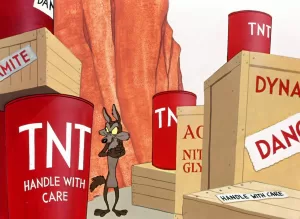
Just what was in the works that the Japanese bomb had detonated by chance? I have to admit that I do not have the answer to this question, but know bullshit when I hear it!!
(b)Civilian Losses;
Although these losses totaled somewhat over 100, these deaths have been largely played down over the years for some unknown reason. Japanese fighters escorting the dive, torpedo, and level bombers were the first aircraft flying over Oahu on the morning of Pearl Harbor’s attack, and they had orders to shoot down everything in the air, which as it turned out included several private planes, but no military aircraft. The death total from non-military aircraft shot down was apparently 15 deaths. Two people flying in a trainer aircraft were able to make a quick landing and abandon their aircraft in time, but a number of civilian workmen at the Pearl Harbor Naval Shipyard were also killed.
As a group of Japanese bombers were approaching Pearl Harbor, they armed their electrical bomb-dropping mechanisms; however, one bomb-dropping mechanism shorted out and caused a bomb to accidentally drop. This short-circuit-dropped bomb struck an apartment building near Pearl Harbor and caused a massive natural gas explosion that nearly consumed the entire building; the death toll from this apartment building mishap was 27. The Zio-American Empire of course claimed that this apartment building was deliberately bombed because of typical Japanese savagery. Plain common sense exposes this canard about the Japanese bombing an apartment building in Pearl City as complete idiocracy; but still, this chicanery is often repeated by non-intelligent lifeforms.
Image courtesy of wojakparadise.net
I have a personal anecdote to add here. The burning apartment building in Pearl City is one of the most often shown videos of Japan’s attack on the Hawaiian Islands, and this film clip is second only in popularity to the exploding Arizona. In this video of the burning apartment building, a car is shown racing past in front of the action; the speeding car in this video was a taxi that was driven by a young man who was a recent arrival from the Philippines. The young man who was driving the taxi in that popular propaganda video was still driving a taxi when I was there in the 1970s. I encountered this old taxi driver quite by chance; I just needed a taxi. During that ride, we fell to talking and he ended up giving me a tour of the Pearl Harbor area as he described what he witnessed during the attack.

Pearl City is a small suburb of Honolulu that is located in the hills overlooking Pearl Harbor on the north side. At least half the deaths in Pearl City occurred in the downtown area where the streets and sidewalks were crowded with shoppers who were riding in cars or moving about on foot. Concerning the deaths in downtown Pearl City, it was the Zio-American Empire’s navy, not the Japanese aircraft that were responsible for these deaths. During the Japanese attack, anti-aircraft guns on the naval ships floating in Pearl Harbor started blazing away at the Japanese aircraft overhead, and many times, the fuses on the rounds that were being fired at Japanese war planes by Zio-American naval gunners were not properly set because they were mechanically timed. Not surprisingly, many of these errant anti-aircraft rounds fired from Pearl Harbor whizzed past their intended targets and traveled a few miles further, then finally landed and detonated in the downtown area of Pearl City where they spread death and destruction in their wake.
Image courtesy of wojakparadise.net
Part Fifteen – Conclusion: “Let Us Meet at Yasukuni Shrine”
Yasukuni Shrine is a Shinto shrine complex that is dedicated to the Japanese military’s war dead. This shrine is gathering place (not a home per se) for the Spirits of dead Japanese service men along with their friends and loved ones who are still on the physical plane. Honoring one’s ancestors is an essential component of Shinto and Shinto-Buddhism. Within the context of Shinto, the dead are considered to be living in a non-material presence where the living can still communicate with them; this is an old Aryan belief as well. The Zio-Americans, the Communists, and International Jewry have always wanted to demolish the Yasukuni shrine because they claim that it glorifies aggression, war, oppression, exploitation, massacre, and such, which are essentially the very things they themselves routinely practice. However, International Jewry and its stinky little minions have not been able to have the Yasukuni Shrine demolished because they have been afraid that such an action just might push the Japanese one step too far. Jews and Communists certainly do not want to hear anymore “Banzais!” (Ten Thousand Years Forever!)
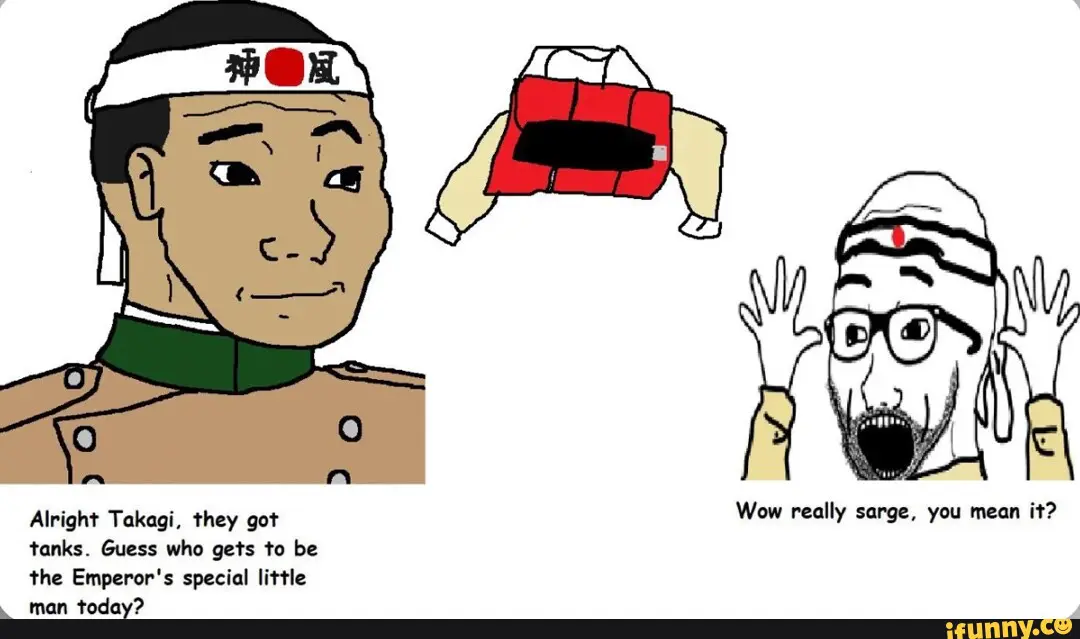
Image courtesy of ifunny.brazil.com
“Let Us Meet at Yasukuni Shrine” is the traditional farewell that members of the Japanese military would say to each other when they knew they were all about to die, such as when an officer was about to lead a Banzai Charge. Rather than surrendering, it was common for Japanese officers to utter these words to their men before meeting their collective demise.

These same words were also spoken when Japanese Kamikaze pilots would say farewell to each other before embarking on their final journey. Towards the end of World War II, the Kamakaze pilots were often groups of teenagers who had grown up and went to school together.
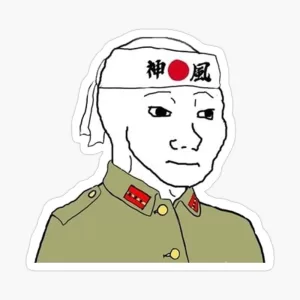
Image courtesy of wojakparadise.net
When properly understood, the Tripartite Agreement must be seen as an alliance between German, Japanese, and Italian National Socialism. With the Sacred Sun playing a key role in the spirituality of the first two. Most, if not all, of the Lesser Axis Powers such as Hungary or Croatia also represented various forms of National Socialism.
During World War II, the Japanese had to lead East Asia because they were the most developed of all Non-Aryan nations and the Japanese still rest only just barely below Aryans in their degree of spiritual development. World War II was fought for many reasons, but one major reason was the “Allies” desire to destroy National Socialism in whatever form it took in order to clear the way for the unchallenged Worldwide Dominion of International Jewry AND International Capitalism (what we might call today ‘Globo-homo’).
To reach the absolute apogee of power, both Jewish world domination and capitalist bourgeois dominance require the same things: internationalism, multiculturalism, and miscegenation, open borders, the unrestricted flow of money, undermined family structures, undermining of masculinity and fatherhood, destruction of traditional femininity, plus a good dose of rampant homosexuality. Such a long laundry list of desired factors is pushed by Jews and their bourgeois lackeys because both interest groups require a homogenous slave population to serve them.
Image courtesy of wojakpadise.net
We see why now that all the Axis Powers (as in an Axis of Resistance) had to be at the very least genocided as cultures, which they have now largely been, if these old Axis nations are not physically genocided, then they are at least mentally and spiritually targeted for genocide. The very existence of separate cultures interferes with the free exercise of Jewish Supremacy AND the free exercise of Global Markets (aka The Pursuit of Maximum Corporate Profits!). Therefore, as seen by Jews and the bourgeois, anything that smacks of National Socialism in any way must be totally destroyed!
To prevent the renaissance of peoples which is so dangerous to the Globalist Agenda, self-flagellation has been deeply ingrained in the cultures of Germany, Japan, and the American South.
Image courtesy of wojak paradise.net
In contrast, many Italians and Spaniards are now beginning to show some backbone concerning the matter of their National Socialist past. These developments are grounds for hope in my opinion.

In recent years Isabel Medina Peralta has been a high-profile public advocate for Spanish National Socialists who are commonly known as Falangists. Image courtesy of radicalrightanalysis.com
Until the Japanese reject the brainwashing that has been foisted on them by their enemies and stand tall and proud as Japanese like their ancestors once did, they are totally finished as a people and they will be forever swept into the dustbin of history. The exact same thing applies to Germany and the American South. The Japanese, and the others, do not have a damn thing to apologize for and they have a very great deal to be proud of. That being said, the Japanese need to once again start behaving like Samurai instead of whipped puppies. The guilt-tripping that has been forced upon the Japanese and the Germans by Jews for so long is now benefiting nobody except those who wish to destroy Japan and Germany. We as Aryans need the Japanese to be the people that they once were because there is a great deal of difficult work that we must accomplish together in order to get this world out of the critical state that the Globalists have gotten it into. It is once again time to renew and expand the “Auld Alliance”!!!
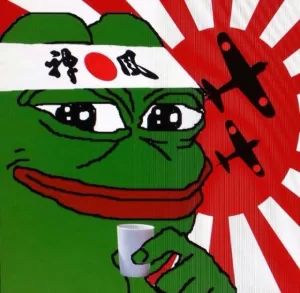
Heil Hitler deva!
Randall Lee Hilburn
